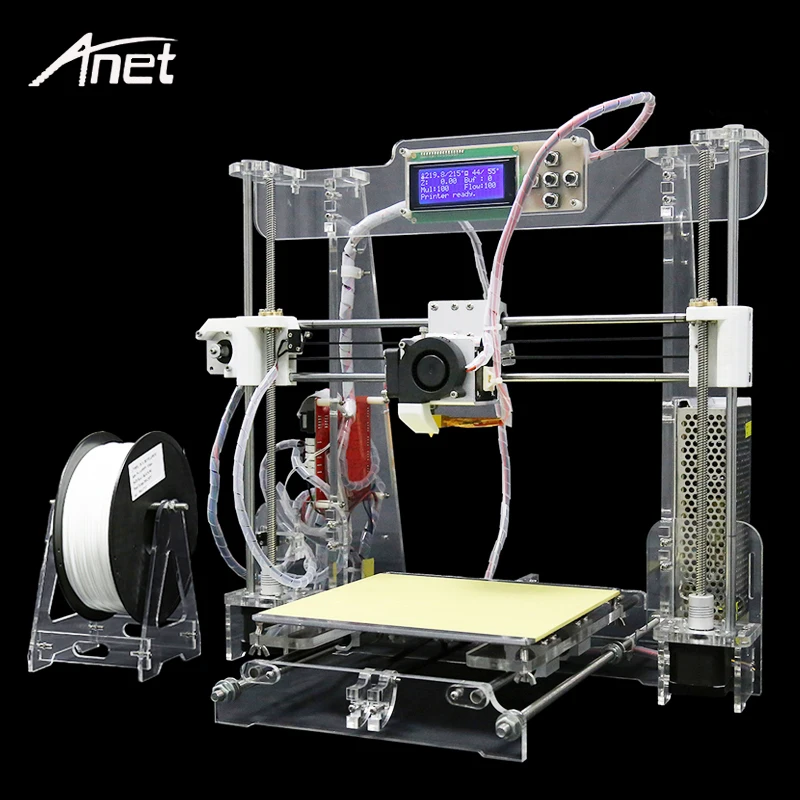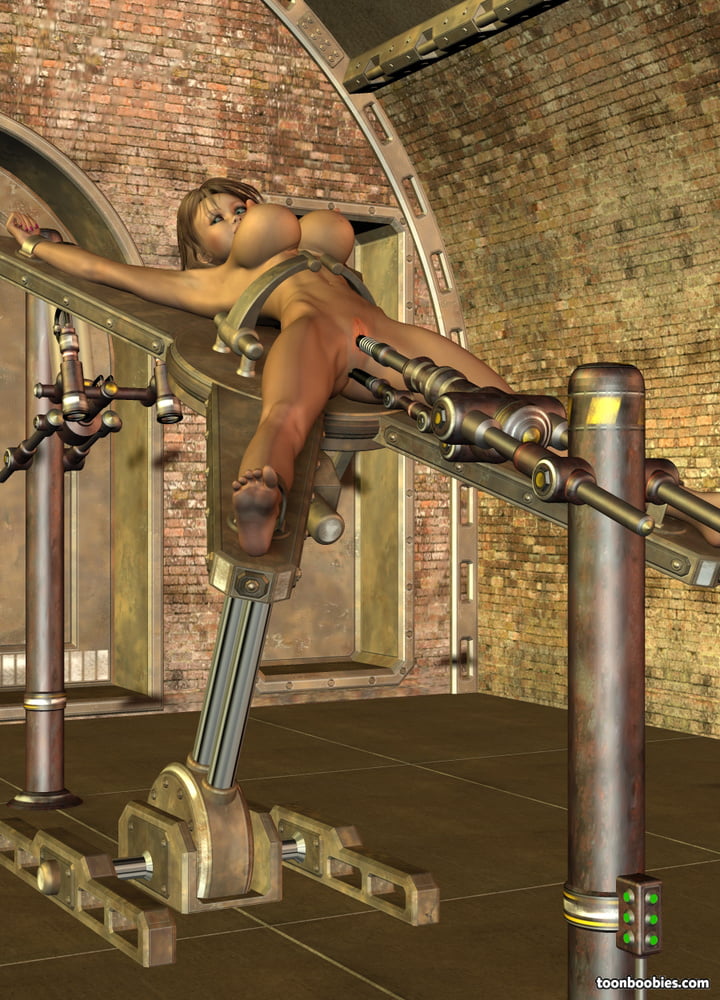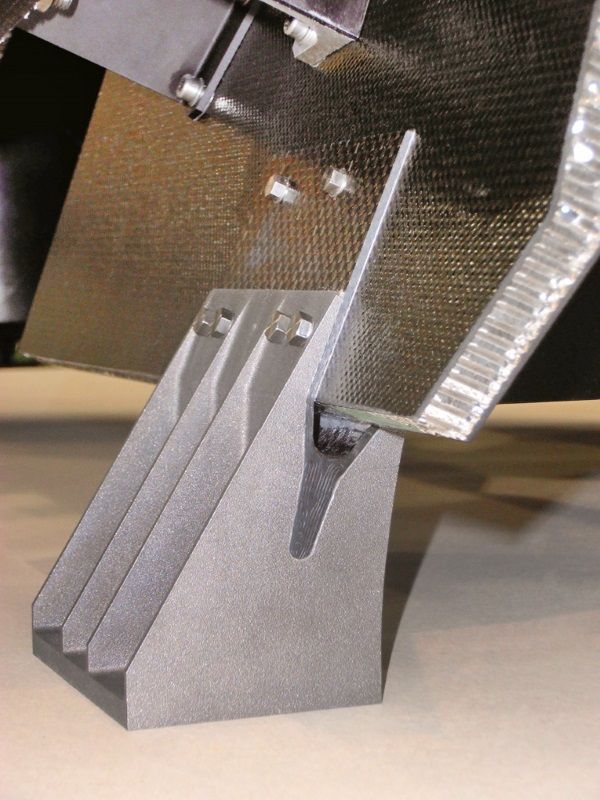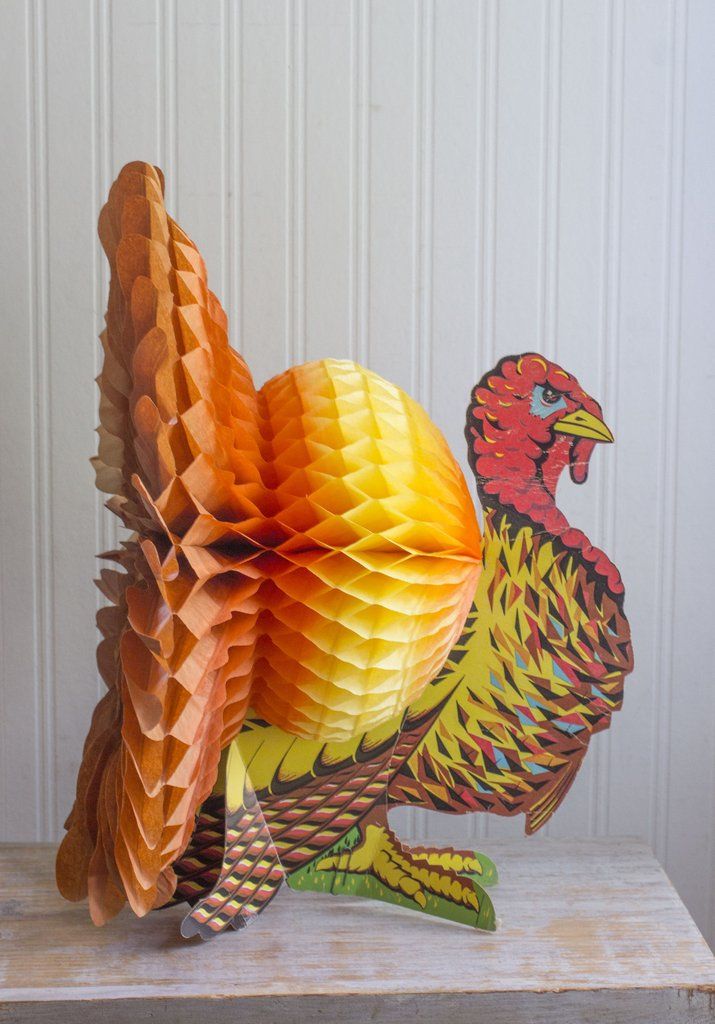Best 3d printer for minitures
6 Best 3D Printers For Miniatures in October 2022 (D&D & More)
The rise of video games has pushed tabletop games to the fringes, but those who enjoy these games are often die-hard fans. With custom characters and models for games becoming so pricey, many have decided that buying a 3D printer for miniatures and printing their own custom models is the way forward.
Miniatures commonly refer to games like Warhammer, Dungeons & Dragons and 28mm miniatures, but 3D printing miniatures can mean any kind of small model.
This article gives advice about the best 3D printers for miniatures for both models and terrain you can buy based on your priorities, preferences, and budget, as well as key tips for printing miniatures – and beyond the specs, the factors that actually make a difference to miniature print quality.
BUDGET PICK
Anycubic Photon M3
High quality 4K screen for low price
Larger build volume than Photon Mono 4K and Elegoo Mars 3
Available at:
Anycubic hereQUALITY PICK
Anycubic Mono X 6K
Higher-quality 6K LCD screen
Much larger print area for printing many miniatures in one job
Available at:
Anycubic hereAmazon hereFOR TERRAIN
Creality Ender 3 V2
Lower quality than a resin printer, but ideal for terrain
Great low-cost entry-level printer
Available at:
Creality hereAmazon hereWhy 3D Print Your Own Miniatures?
Rather than being limited by the models featured in the catalogs of miniatures companies, and having to pay in excess of $10 per model, with a 3D printer you can print whatever you want, and also save up to 90% on the purchase price!
Some designers online publish their miniature files for free online (we include the best places later on), but even premium models are extremely cheap – often just a few dollars. And when you buy these, you get to keep the STL file, so you can print the model over and over again.A 3D printed figurine we printed on our Elegoo resin printer.3D printed ring miniature – only resin printers are capable of this level of detail.
Some premium files even come with their slicer profiles pre-made so that you just need to import the file, and print.
So for deciding whether to buy or 3D print your tabletop miniatures, the main two factors are choice, and price.
The Best 3D Printers for Miniatures
| Name | Printer type | Build volume (mm) | XY Resolution | Price | Where to buy for best price? |
|---|---|---|---|---|---|
| Elegoo Mars 2 Pro | Resin | 129 x 80 x 160 | 50μm | $220 | Elegoo here |
| Anycubic Photon M3 | Resin | 163 x 103 x 180 | 40μm | $300 | Anycubic here |
| Elegoo Mars 3 | Resin | 143 x 90 x 175 | 35μm | $300 | Elegoo here |
| Anycubic Mono X 6K | Resin | 197 x 122 x 250 | 34μm | $569 | Anycubic here |
| Phrozen Sonic Mini 8K | Resin | 165 x 72 x 180 | 22μm | $699 | Phrozen here |
| Creality Ender 3 V2 | FDM | 220 x 220 x 250 | $279 | Creality Store here | |
| Ender 5 Plus | FDM | 350 x 350 x 400 | $579 | Creality Store here |
How Much Does It Cost to 3D Print Miniatures?
It costs around $1 per miniature 3D print on average, though this will vary depending on the size of the model, and the type of resin used. A 1L bottle of resin will print between 30-35 miniatures of a reasonable size, with hobbyist resins costing $20-40.
A 1L bottle of resin will print between 30-35 miniatures of a reasonable size, with hobbyist resins costing $20-40.
Remember however that you’ll use around half the resin you use on miniatures on supports, so only around two-thirds of your resin goes into the actual models.
Why Not To Use FDM For 3D Printing Miniatures (But You Should For Terrain)
While FDM 3D printers have larger print areas, and the filament is cheaper and non-toxic, you can’t get anywhere near the same level of detail. And minuscule details are the key to amazing-looking miniatures.
You’ll see the layer lines on the model, and will need a fair amount of finishing and post-processing to reach your quality standards. To put it into perspective, if you saw an FDM-printed miniature in a shop, you probably wouldn’t buy it.
But, you can print the larger, rougher parts with an FDM printer, such as terrain, backgrounds, and accessories like towers, bridges, and other cool add-ons. Often these parts will be wider than desktop LCD printers can fit, but an FDM printer like the Ender 3 should be able to print it, and if not, a larger printer like the Ender 5 Plus surely can.
Overall, we recommend buying a resin printer for miniature models, and an FDM printer for terrain and accessories. However, if you’re a complete beginner and resin printing is intimidating, then you can still print adequate quality miniatures with an FDM printer.FDM printed terrain for miniatures. Source
The Best 3D Printers For Miniatures 2022 – Reviews
We picked both FDM and resin printers depending your preferences. The first part features the best resin printers for miniatures in every price range, and then the best FDM 3D printers for miniatures we recommend are listed.
3DSourced is reader-supported. When you buy through links on our site, we may earn an affiliate commission. Learn more
Best Resin 3D Printers For Miniatures
Elegoo Mars 2 Pro Mono — best low cost resin 3D printer for miniatures
- Price: $250 — Available at Elegoo store here / Also available on Amazon here
- Maximum print volume: 5.1″ x 3.1″ x 6.3″
An LCD 3D printer capable of fast speeds and very fine details despite the low price, the Elegoo Mars 2 Pro has fast become a mainstay in desktop 3D printing. When we tested it for our Elegoo Mars 2 Pro review, we were very impressed with the quality it delivered at such a low price.Clank 3D print we printed on the Elegoo Mars 2 Pro
When we tested it for our Elegoo Mars 2 Pro review, we were very impressed with the quality it delivered at such a low price.Clank 3D print we printed on the Elegoo Mars 2 Pro
For makers who have experience with 3D printing and are comfortable with the added complexities of resin printing, the Elegoo Mars could be your perfect 3D printer for miniatures and tabletop models. It can print smoother models with clearer, crisper finishes than FDM printers, and the resins used do not cost as much as they used to.
- We also recommend an Elegoo washing and curing station — Available on Amazon here
The 2K 6″ LCD screen gives the printer great precision for solidifying resins, with layer resolutions between 0.01-0.2mm available. It comes with CHITUBOX, the highly-praised resin 3D slicer which slices models quickly to save you time, and also includes useful features such as tools that hollow out models before you print to lower material costs, if you don’t mind slightly less durable parts.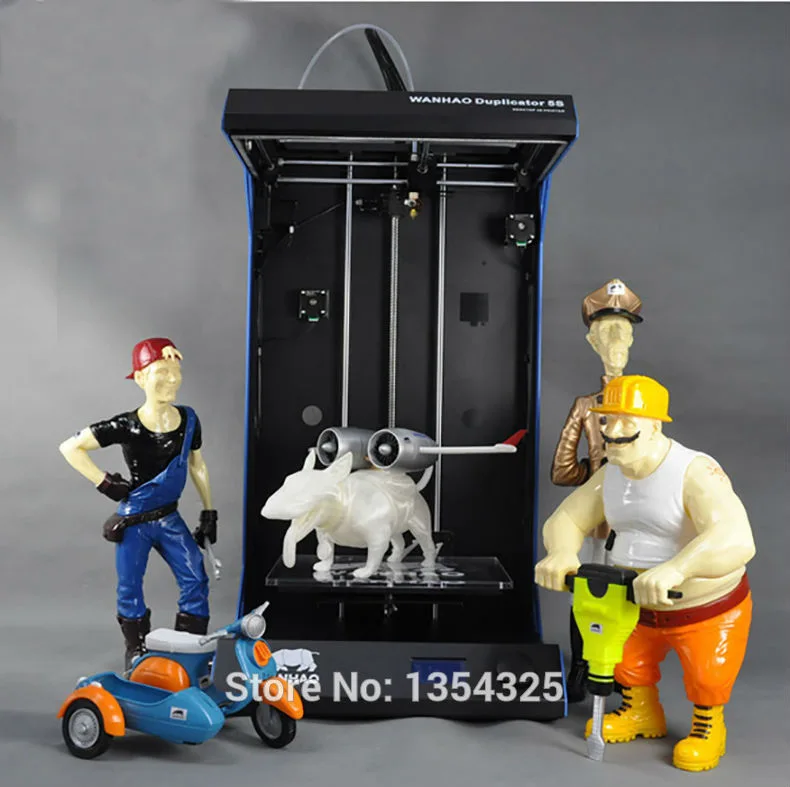
Overall, the Elegoo Mars 2 Pro Mono is one of the best low cost resin printers around, and for creating miniatures, if you have the tech know-how, you may find resin printing meets your needs best.
Top value: If you’re happy with a 2K LCD, the Mars 2 Pro is your best option. If you have the money, opt for the Elegoo Mars 3 or Photon M3.
We were impressed with the details of the miniatures we printed with it.
Cons
Newer, higher-spec printers have since been released – however, most cost more.
Anycubic Photon M3
- Price: Check latest price at Anycubic here
- Build Volume: 163 x 103 x 180 mm
- XY Resolution: 40 microns
- Minimum Layer Height: 10 microns
The newly released Anycubic Photon M3 hits its stride in miniature making by bundling in better specs at the same price as its predecessors, the Photon Mono and Mono 4K.
These enhancements are most pronounced with a larger 163 x 103 x 180 mm build volume. This might not seem like much on paper, but means the Anycubic Photon M3 can produce much larger single models or batch print more copies of the same in one sitting than the Mono 4K, let alone the original Mono.
This might not seem like much on paper, but means the Anycubic Photon M3 can produce much larger single models or batch print more copies of the same in one sitting than the Mono 4K, let alone the original Mono.
The extra z-height lends itself well to taller models, excellent if you’re working to produce large figurines for display purposes.
The Anycubic Photon M3 and Mono 4K both use a monochrome 4K LCD, but the Photon M3’s larger 7.6” screen handles the larger build volume. In numbers, this means a slight downgrade to a 40 micron XY resolution compared to the Mono 4 K’s 35 microns, but at these low numbers, the difference is indistinguishable to the naked eye, even for veteran miniature aficionados.
We still recommend the Photon M3 over the Mono 4K for the larger build volume – at this level, a 5-micron difference is not going to make a difference, even in the most precise of miniatures.
Against the standard Mono’s 2K LCD, there’s no competition: the Anycubic Photon M3 delivers far better fine details and features on even the most complex Warhammer and D&D figures. It does so fast as well, with a solid 50 mm/h print speed, which equates to roughly 30 minutes per 28 mm model.
It does so fast as well, with a solid 50 mm/h print speed, which equates to roughly 30 minutes per 28 mm model.
Extremely affordable.
Perfect for larger miniatures – especially taller models.
Cons
Slightly lower resolution than the Mono 4K – but this is because of the larger screen and build volume on the Photon M3.
Anycubic Mono X 6K
- Price: Check latest price at Anycubic here / Amazon here
- Build Volume: 197 x 122 x 250 mm
- XY Resolution: 34 microns
- Minimum Layer Height: 10 microns
Positioned as an upgrade to the popular budget Mono X, the Anycubic Mono X 6K doesn’t reinvent the wheel as much as building upon those solid foundations and fantastic build quality.
Leading this is a jump to a 6K display, an enhanced light matrix to improve curing uniformity, and a larger 9.25″ LCD. In practice, this means a high level of print quality and a sharper 34 micron XY resolution across a larger surface.
For miniature makers, this means a noticeable jump in quality over the Mono X, especially on finer parts such as hairs, scales, horns, armor detail, and facial features.Printed on the Mono X 6K. Credit: u/MaxHereticus66
This applies to large and small figures or models thanks to the Anycubic Mono X 6K having a roomy 197 x 122 x 250 mm build volume for a resin printer. In other words, the Anycubic Mono X 6K is as suited to printing large Warhammer tanks, knights, and warhounds as classic space marine 28 mm miniatures.
We highly recommended the Mono X when it was the best-quality mid-range resin printer around, and the Mono X 6K builds on this wonderfully. However, if you want to save money, the Photon M3 is a great shout if you’re comfortable with 4K resolution, as the Mono X 6K costs double the price.
For amateur Warhammer players and those partial to the occasional Friday night D&D session, the Photon M3 remains the most cost-effective option. But, for next-level resolution, the Mono X 6K is the best out there.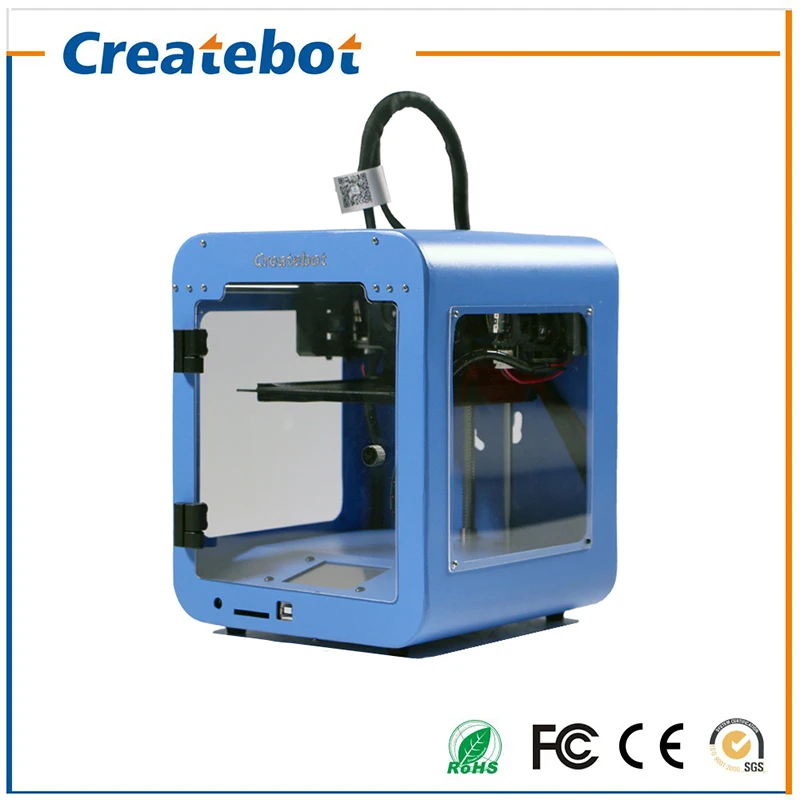
The Mono X was already a top pick – now it’s upgraded.
6K LCD offers superb rendering of intricate details.
Even larger build volume for producing many miniatures at once.
Cons
Expensive compared to budget 3D printers for miniatures.
If you don’t need all 6K quality, opt for a Photon M3, Photon Mono 4K, or Elegoo Mars 3.
Phrozen Sonic Mini 8K
- Price: Check latest price at Phrozen here
- Build Volume: 165 x 72 x 180 mm
- XY Resolution: 22 microns
- Minimum Layer Height: 10 microns
Widely considered one of the best consumer-grade resin 3D printers on the market, the Phrozen Sonic Mini 8K is ideal for super high-quality miniatures, whether for tabletop gaming, display, or war gaming.
If you can stomach the price tag, the Phrozen Sonic Mini 8K is as premium as the best 3D printers for miniatures get – unless you go full industrial.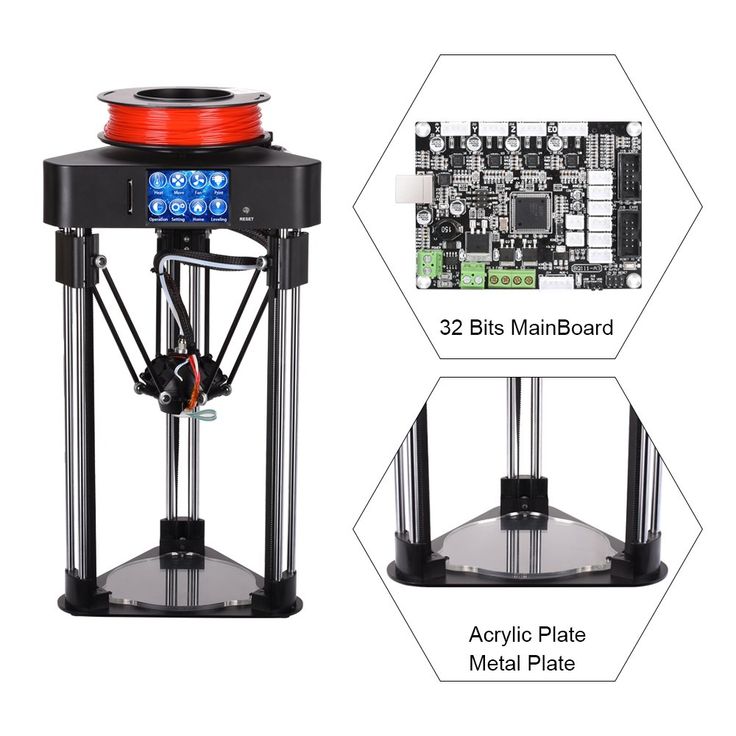
The Phrozen Sonic Mini 8K offers a best-in-class 22 micron XY resolution. It outperforms much-loved resin printers such as Elegoo Mars family and Anycubic Photon Mono X 6K and Mono 4K. In action, this type of resolution renders even the tiniest features in exquisite detail, even on small 28 mm miniatures.A 4K print on the left, and 8K on the right. Source: Geek Gaming Scenics
Now, for all its ability to create superb miniatures, the Phrozen Sonic Mini 8K does have one major drawback compared to other resin printers – a smallish build volume.
It sits at 165 x 72 x 180 mm, putting it on par with much cheaper alternatives like the Anycubic Photon Mono 4K.
This is necessarily a downside if you’re printing single large figures, but it does reduce the scope for batch printing multiples simultaneously, so if you want to produce large volumes for your business or home games, consider Phrozen’s Sonic Mighty range, the Anycubic Mono X 6K, or Elegoo Saturn S.
Overall, if you’re looking for the best quality miniatures, and aren’t too worried about a slightly smaller build volume, the Phrozen Sonic Mini 8K is largely unrivaled.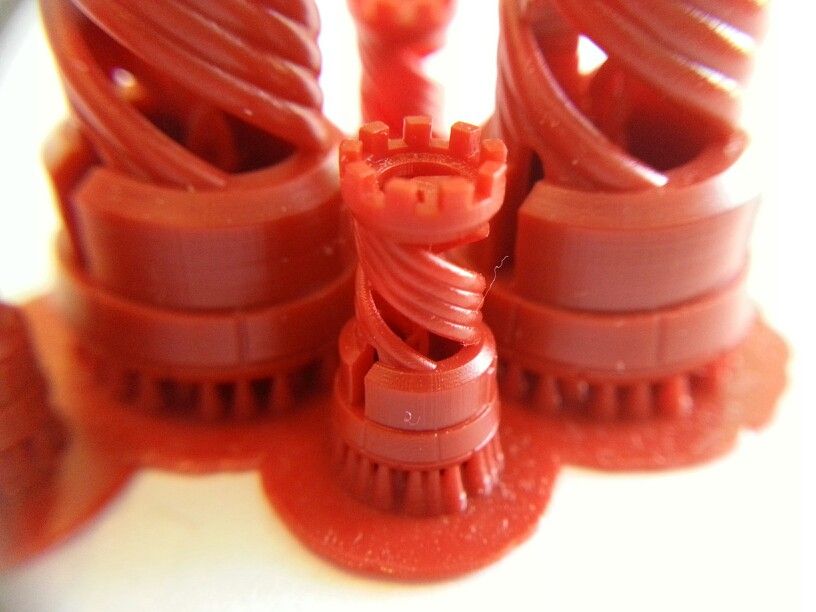
Best-in-class 22 micron XY resolution.
Perfect for small 28 mm figures with precise features and details.
Cons
Small-ish build volume for the price.
Best FDM 3D printers for miniatures
Creality Ender 3 V2 — Best 3D printer for miniature terrain
- Price: Check price at Creality Official Store here / Available on Amazon here
- Size: 220 x 220 x 250 mm
- Resolution: 100 microns
Considered one of the best cheap 3D printers around, the Ender 3 is famed for its reliability and effectiveness for the price. It comes as a 3D printer kit, but takes under an hour to assemble and it’s really easy – just 20 screws.
It’s an FDM printer, so it cannot reach the same level of precision as an Elegoo or Anycubic resin printer. However, it’s one of the best FDM 3D printers for terrain for miniatures, as it prints reliably, cheaply, and has a decent print volume of 220 x 220 x 250 mm.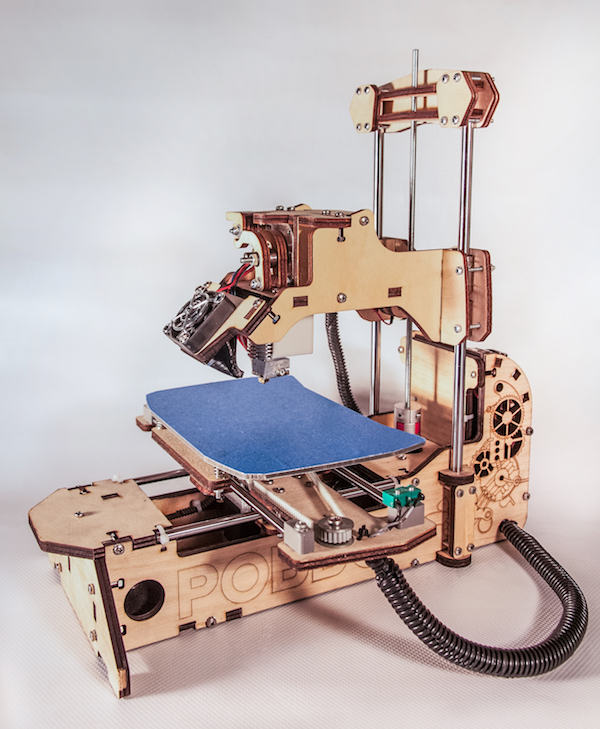
If you want to avoid resin printing you can use it to print miniatures, but they won’t have the same level of precision, and you’ll need to do some sanding and general post-processing to get them closer to the level you’re happy with.
But, the Ender 3 V2 is the best printer in its price range for terrain, and PLA filament is very cheap and super easy to print with. The only issue could be if you want to print large towers or terrain that doesn’t fit within the build volume.
Best low-cost FDM kit – easy to build and print with, and it’s reliable and durable.
Very upgradable: many extruder, bed, hotend, and other upgrades available.
Cons
Not well suited to miniatures – stick to terrain, and strongly consider a resin printer instead.
Ender 5 Plus – best 3D printer for miniatures terrain
- Price: Check latest price at Creality here / Amazon here
- Build Volume: 350 x 350 x 400 mm
- Printing Accuracy: 100 microns
- Layer Thickness: 100-400 microns
If you’re leaning towards a budget FDM printer like the popular Ender 3, but its build volume doesn’t quite measure up to the size of terrain you’re planning to print, the Ender 5 Plus is a great alternative.
It supersizes the build volume to a generous 350 x 350 x 400 mm, ideal for those sprawling backdrops for your tabletop and D&D adventures that simply won’t fit on a stock Ender 3.
As low-cost consumer-grade printers go, this volume size is up there and should cover all your terrain needs. It’s particularly suited to intricate ruins, battlefields, towers, rocky outcrops, dungeons, and the like – perfect for heightening that crucial sense of immersion.
Aside from the large format, Ender 5 Plus also features some handy benefits over the Ender 3. It comes with a BLTouch automatic bed leveling probe to save time and effort, so you can concentrate on bringing to life terrain.
There are also dual z-axis lead screws to improve stability and, by extension, overall print quality. Elsewhere, it boasts a filament sensor that alerts you if the filament runs out or breaks, so you won’t waste any more time than you need on a print that won’t complete.
The Ender 5 Plus is priced over double what you’d expect to pay for the Ender 3, but if you can stretch your budget, it’s a do-it-all terrain printer that’s well worth the extra money.
Massive 350 x 350 x 400 mm build volume.
Convenience features like automatic bed leveling and filament sensor.
Ideal for large backdrops and terrain models.
Cons
More than double the price of the Ender 3 and Ender 3 V2.
Important Specs & Factors To Consider Buying a 3D Printer For Miniatures
Layer Height
Different 3D printers have different minimum layer heights, for example the Elegoo Mars 3 has a minimum layer height of 0.01mm, or 10 microns. The Creality Ender 3 V2 has a minimum layer height of 0.1mm, or 100 microns.
The smaller the layer height you choose for your models, the better the quality, and the less visible the layer lines will be.
However, the lower the layer height, the more layers you’ll have in your model, which increases the time it takes to print, and also increases the chance of a failed print.
We advise that you don’t need to go all the way down to 0.01mm on your resin 3D printer with miniatures – 0.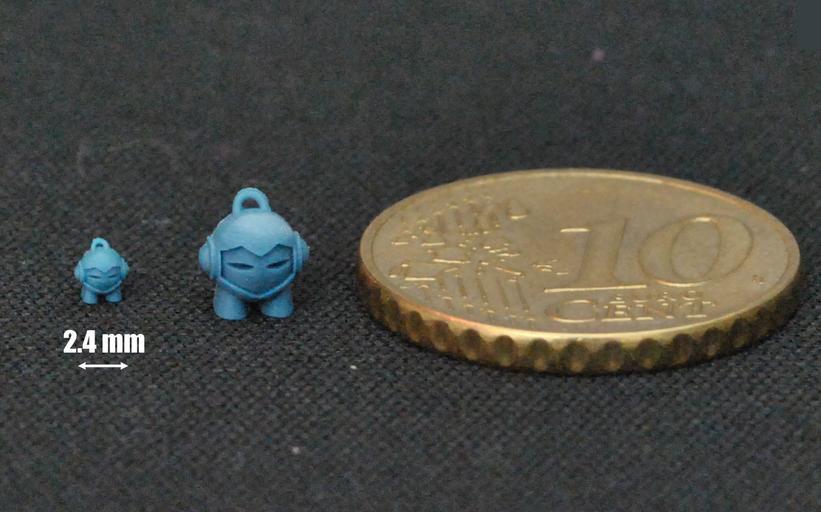 03-0.04mm is a good range for great quality. To put that into perspective, in a 6cm tall resin miniature print, with 0.05mm layers, that is 1200 layers to print.
03-0.04mm is a good range for great quality. To put that into perspective, in a 6cm tall resin miniature print, with 0.05mm layers, that is 1200 layers to print.
Screen Quality and Precision: Do you need a 4K, 6K, or 8K Screen? And Should You Buy a Mono 3D Printer?
The most important thing is to pick a mono 3D printer. They cure and print resin layers often 3x faster, and often last up to 4x longer, too, so they’ll save you money and hassle replacing parts continuously.
We recommend you opt for a 4K resin printer if you can afford it, as they’re not too much more expensive than 2K MSLA printers now, and you will notice an improvement in precision, especially on details like hair and beards, or hands and fingers on your models. If you have the money, go for an 8K printer – but it isn’t a necessity.
However, do not look solely at the specs when determining if a printer is high quality.
A 2K screen with a printer made from high-quality parts – such as build plate bolts and resin vat locks that can handle low layer heights and retain accuracy and aren’t prone to threading – will produce better miniature models than a shoddily built 4K printer.
Focus on buying a well-made printer made by a reputable company with a high-quality screen.
High-quality brands include Anycubic, Elegoo and Phrozen in these lower price ranges, and we highly recommend these if you’re printing miniatures at home or other precise resin models.
That being said, there are noticeable differences at each resin quality level – mostly after you’ve primed the models.
Corners will look a bit sharper, and certain facial features and muscle definitions will come out better generally – but you can still create very good models on 4K or even 2K LCD screen resin printers, you just get that extra sharpness when you go up to 6K or 8K.
How Speed and Size Works with a Resin Printer
Resin printers work differently from FDM printers. Instead of printing one part at a time as an FDM printer’s extruder traces the layer, LCD printers flash an entire layer at once, so no matter how many models are being printed within the build plate, they’ll all print in the same amount of time.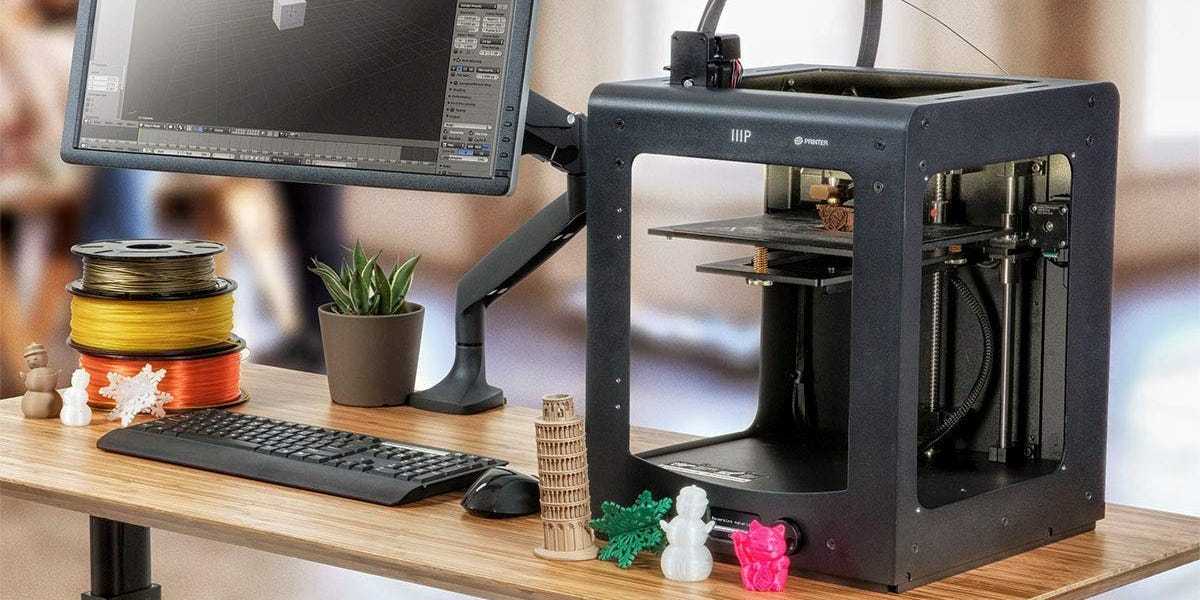
So, the only factor that determines how long a resin print job will take is the height of the tallest model.
This makes the build size of a resin printer important, as the more models you can pack into the area, the more models you can print in one job – in the same amount of time. Large 3D printers can print potentially 20+ miniatures at once – though most hobbyist printers can print around 3-4 reasonably sized miniature models.
Things to Remember When 3D Printing Resin Miniatures
Resin is toxic and irritant – never touch it directly, and if you do, wash your hands thoroughly with soap and water. Wear a mask to avoid the fumes, generally try to avoid the room when printing, and if possible put the printer near ventilation.
There is post-processing involved after printing – you’ll need to scrape the resin prints off the build plate, remove the supports (wear gloves), wash the resin off of the prints with isopropyl alcohol, dry them, and cure them in UV light.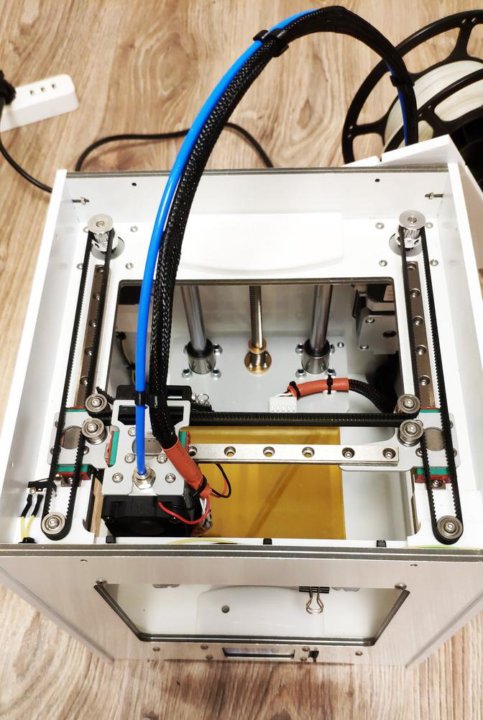 Then, optionally you can fix any imperfections, prime and paint them for your custom look. We recommend buying your brand’s wash and cure station to save you time and hassle.
Then, optionally you can fix any imperfections, prime and paint them for your custom look. We recommend buying your brand’s wash and cure station to save you time and hassle.
You will need to replace parts – the two main culprits are FEP films, and screens, which will need to be replaced over time. This puts you out of action for a while, and costs money.
What makes a good 3D printer for miniatures
- Precision: measured in microns, this is key for how detailed even the smallest features of your models will be. The best resin 3D printers for miniatures often reach 35 microns, for great details. FDM printers can’t reach these same resolutions.
- Print area: since MSLA printers cure entire layers of resin at once, larger build areas mean you can print even more models in the same amount of time.
- Stable, metal frame: a heavy frame is less influenced by other variables such as the vibrations that can affect model quality, even slightly.
 High-quality parts are key to accurate miniatures, so pick up a printer by a reputed brand known for making well-built products.
High-quality parts are key to accurate miniatures, so pick up a printer by a reputed brand known for making well-built products.
Best Practices for FDM 3D Printing Miniatures
- Nozzle size: using a small nozzle makes for better precision on printers, and though they print slower, this isn’t a big problem when printing small models that do not take long anyway.
- Slow printing speed settings: if you have the fastest 3D printer around, such as a delta 3D printer, you should slow it down when printing small, precise models. You may want to reduce speed to as low as 20-30mm/s.
- Infill percentage: you may want to change this based on how strong you want your miniatures to be. If you want to save on material costs and don’t mind giving up some part strength, you can reduce infill to 10%, though some hobbyists who want solid models may go for a higher infill percentage.
- Retraction settings: optimize retraction settings to prevent oozing and stringing of filament, which can occur especially often with PLA.

- Post-processing: not directly related to your printer, but you can decide whether to paint your model, sand or polish it to enhance its finish.
Where to find files for miniature 3D prints?
Here are some sites that host free and paid files:
- MyMiniFactory
- Cults3D
- Thingiverse (all free)
- Gambody (specialized in video game/comic book models)
- Pinshape
And here are some articles where we recommend miniature-related prints:
- Dungeons and Dragons 3D print files
- Warhammer 40K 3D prints
- 3D printed figurine files
- 3D printed anime figure files
- 3D printed dice towers
- 3D printed dragon files
Post-Processing and Painting Miniature Prints
Really, a miniature isn’t truly finished without some post-processing love and attention. After all, 3D printers can only go so far when it comes to bringing out the lush detail and intricacies of a model.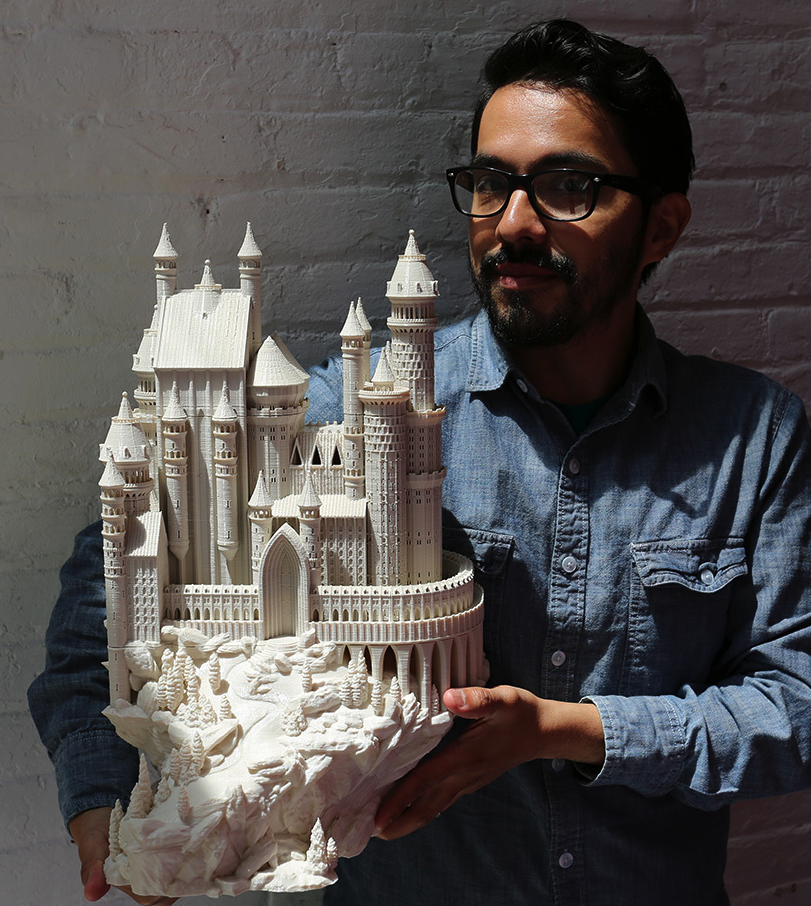
Support Removal
First, remove any support structures by either removing them by hand or using clippers, or in the case of soluble supports, immersing them in the appropriate liquid, usually water.
Cleaning and Sanding
Next, you’ll want to clean and improve the print surface to remove blemishes, blobs, marks from the supports, and other imperfections.
We recommend ordinary sandpaper or a sand sponge – they are cheap, effective, and come with grit coarseness levels for quick sanding, smoother finish, etc.
Alternatively, you can buy a small nail grinder with different attachments suited to miniature post-processing. You can also use a hobby knife, scalpel, or precision needle files for those hard-to-reach places.
Glue Parts Together (If Multiple Parts) and Fill In Holes
After cleaning up the print, glue or attach parts of the mini using a bonding agent (you can also do this after painting if you prefer), and fill in any drainage holes, seams, gaps, and cracks using a brush and a mix of resin and baby powder.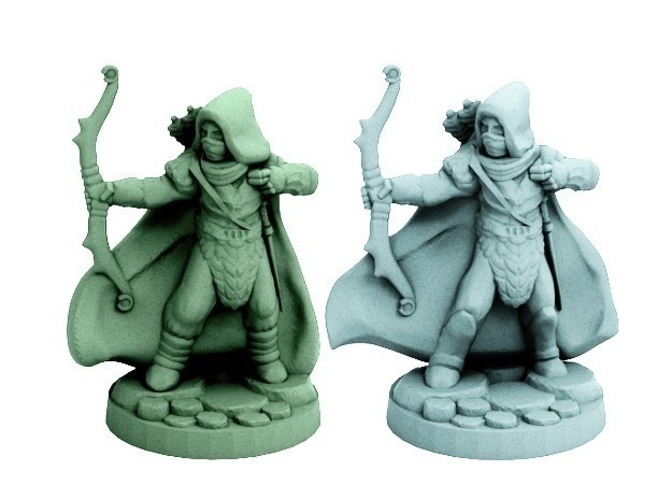
Be sure to cure the newly-applied resin mixture afterward. You can use non-cure products like the excellent Apoxie Sculpt to fill in gaps.
Priming and Painting
Next stop, we have painting. First, we’ll need to prime the minis to create a strong first layer for successive layers of paint to adhere well.
Both spray and brush paint options are viable – any old primer from your hardware store will do. If you’re looking for a brand name, we recommend Tamiya Surface Primer.
Two light coats are a good option to be on the safe side. Allow plenty of time for the primer to dry properly.
Finally, paint your miniature. Standard miniature etiquette and techniques apply here. We recommend using regular acrylic paints found at any hobby store such as Vallejo Game Color. We recommend investing in different brush sizes to cover the painting of everything from large single-color portions to small intricate details.
From there, take your time painting, and remember, practice makes perfect. Your first minis might not look perfect, but stick with it, and they start coming out great in no time.
Your first minis might not look perfect, but stick with it, and they start coming out great in no time.
Is it legal to 3D print Warhammer models?
It is legal to 3D print Warhammer figures as long as you do not try to sell them or use them for any other kind of commercial use. Patent laws prevent anyone from selling any object based on someone else’s intellectual property. If you design the model yourself however, if it isn’t identical or a total imitation of another’s copyrighted work, then you aren’t infringing on their copyright or patents.
However, keep abreast to new changes in laws that affect where creators and IP holders stand legally. For example, the 2021 Appropriations Act changed the way holders of IP and perceived infringers interact. This article is also useful for a general understanding of where you stand with 3D printing and intellectual property.
We would like to conclude this article by reminding readers to be careful, as intellectual property (IP) laws prevents the creation, download or 3D printing of trademarked characters. You can get into trouble if you print a trademarked character such as a Pokémon, with some large companies becoming increasingly studious in pursuing people breaking these laws.
You can get into trouble if you print a trademarked character such as a Pokémon, with some large companies becoming increasingly studious in pursuing people breaking these laws.
Is it worth buying a 3D printer for miniatures?
If you plan on printing large numbers of miniatures, it is definitely worth buying a 3D printer for miniatures. You can print any model you want rather than buying whatever’s available, and for a fraction of the price. You can get started for cheap by spending under $300 on an Anycubic Photon M3 or Elegoo Mars 3.
What is the best material for 3D printing miniatures?
Resins are the best material for 3D printing miniatures, as they have fine details like faces and weapons that filament won’t be able to match. Some of the best affordable resin materials are made by companies like Siraya Tech, Anycubic, and Elegoo, letting you print fantastic details on your miniatures within your budget.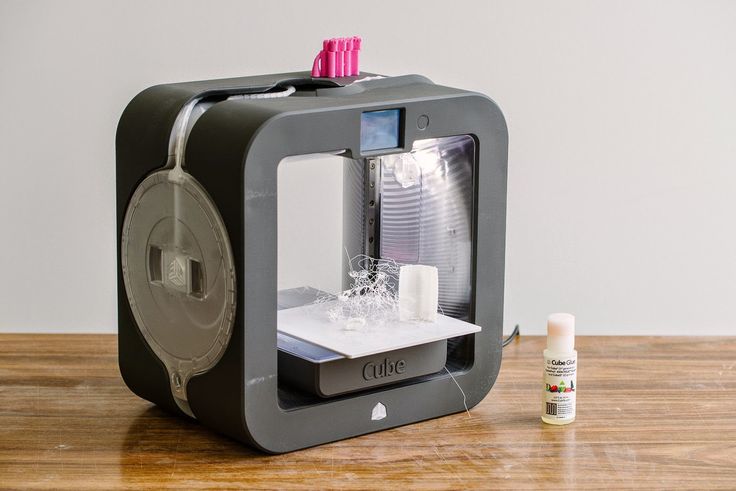
Best 3D Printer for Miniatures 2022 and Resin D&D Minis
3D printing is a vast and ever-expanding sphere, which is ready to welcome everyone with a touch of enthusiasm and a bit of spare money. While the industry becomes more and more diverse, new opportunities open up not only for large-scale producers, but also specialists in medicine, education, design, science, engineering. And with affordable technologies, even your hobby can now reach the next level. One of the perfect examples of 3D printing accessibility is personal and professional manufacture of desktop miniatures for popular table games, such as D&D, Warhammer 40K, etc.
Credit: @inquisitornero / Instagram
This is Top 3D Shop, and today we are going to tell you about making miniatures for your favorite board games and more. Read on to find out about the best 3D printers for your future creations as well as their potential price tag and useful download sources.
What to look for
Credit: @cyberforgeminiatures / Instagram
When searching for the best 3D printer for miniatures, one should consider between the two most common and cost-effective options, which are resin and FDM-based machines.
The choice greatly depends on your aims. First, note that materials for FDM printing are more affordable compared to photopolymer resins for devices based on stereolithography (SLA) technology. Apart from that, models printed with resins are more difficult to post-process. Still, the total accuracy, complex geometry, and surface finish quality is better in SLA. Other than that, FDM printers offer larger build volumes, which is important for making terrain and mass production of miniatures.
Overall, when choosing between these two types, it comes down to the following advice: FDM printers are best for beginners and large projects, while 3D printing experts prepared for complex operations and striving for highly detailed outputs might opt for a resin 3D printer.
Best resin 3D printers for miniatures
SLA (Stereolithography), DLP (Digital Light Processing), and LCD (Liquid Crystal Display) are the main technologies used in resin 3D printers. Despite their similarity, there are some slight differences that should be considered when choosing a machine for certain purposes.
The SLA printing technology has come a long way and become a powerful means of production in various areas, including creative crafting. Classic 3D printers based on this technology utilize UV lasers focused on specific points to cure subsequent layers of resin. The light source is placed under the resin vat, while the print base goes up with the object being printed progressively.
Resin 3D printers in general can also be referred to as SLA 3D printers as they are all based on the principle of stereolithography.
Credit: @variedtechniques / Instagram
DLP is basically identical to SLA, the only difference being the use of a UV projector instead of lasers. This makes such printers faster than their predecessors: where the laser traces the surface of each layer, a DLP device prints a whole layer over the same time. DLP 3D printers usually provide highly precise and repeatable results since their light projection is more direct. Moreover, DLP machines serve longer compared to LCD ones.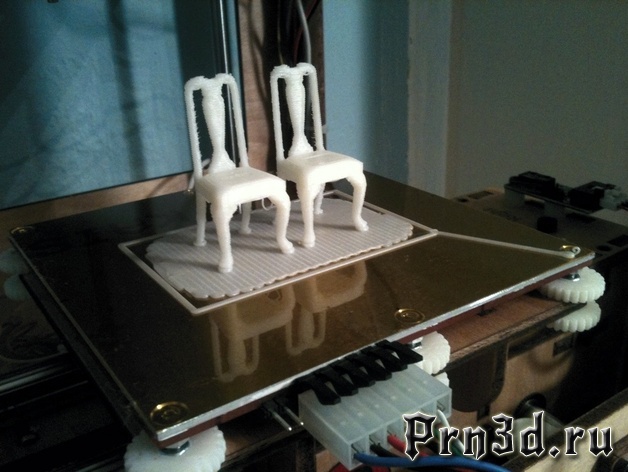
In the case with the latter, the light projected by LEDs is masked with an LCD screen to get the desired shape for each layer (it is also called MSLA, or Masked Stereolithography). It’s the most common type of resin 3D printers with several minor subcategories. Generally, LCD printers benefit from softer edges, where with DLP peculiarities they are sometimes too sharp.
What matters most when we talk about printing desktop miniatures, is layer height. If it is too high, you will see separate ridges, which will definitely spoil the impression of the model. This is mostly the case with FDM printers: they require post-processing to smooth out the aforementioned ridges. As for resin 3D printers, individual layers are almost invisible.
With so many thoughtful devices available, it’s hard to choose the best for making high-quality tabletop miniatures. Let’s look through several top-notch devices for every aspirer to find a model according to their plans and needs.
Phrozen Sonic XL 4K 2022 resin 3D printer
The Phrozen Sonic XL 4K 2022 is a professional LCD/MSLA 3D printer. Due to a custom-made monochrome LCD screen with 4K resolution and a parallel UV LED matrix backlight system featuring uniform light exposure, it is able to produce highly detailed prints at top speed. Among other appealing qualities, the machine boasts a large build volume of 190 x 120 x 200 mm, reliable construction, outstanding accuracy of up to 10 microns, fast curing (0.2 seconds per layer), and open material system expanding your creative possibilities. Most importantly, the Sonic XL 4K 2022 is extremely easy to use, which makes it a perfect device for beginners.
Due to a custom-made monochrome LCD screen with 4K resolution and a parallel UV LED matrix backlight system featuring uniform light exposure, it is able to produce highly detailed prints at top speed. Among other appealing qualities, the machine boasts a large build volume of 190 x 120 x 200 mm, reliable construction, outstanding accuracy of up to 10 microns, fast curing (0.2 seconds per layer), and open material system expanding your creative possibilities. Most importantly, the Sonic XL 4K 2022 is extremely easy to use, which makes it a perfect device for beginners.
Credit: @billonbass / Instagram
Pros
- mono LCD screen
- microscopic precision
- impressive speed
- intuitive controls
- affordable price
Cons
- complex cleaning procedure
Flashforge Foto 13.3 3D printer
With a build area of 292 x 165 x 400 mm, the Flashforge Foto 13.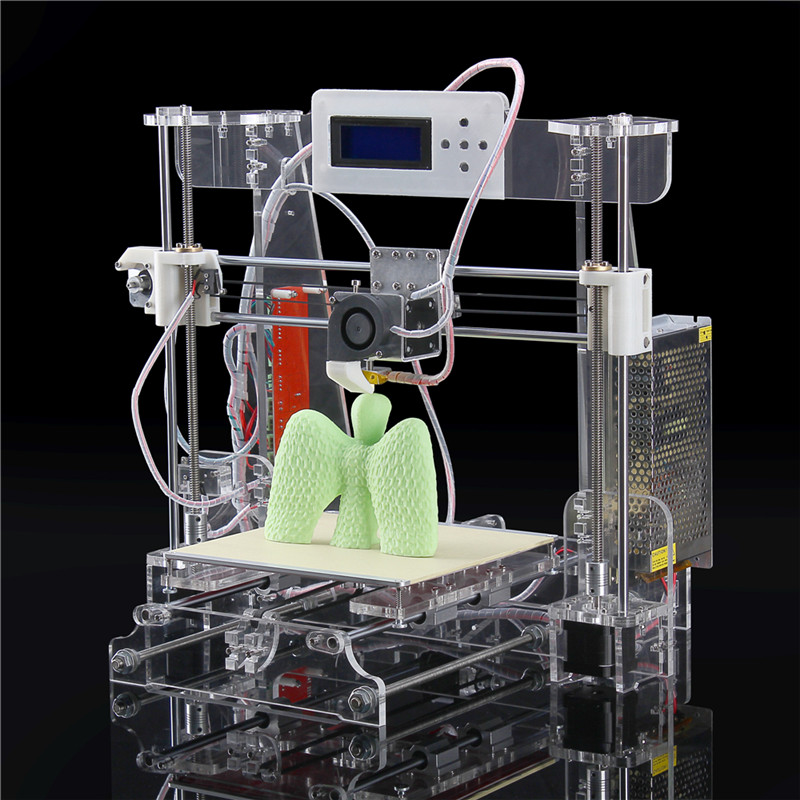 3 LCD-based 3D printer is a tempting offer for mass producers and large format lovers. In addition to its decent print chamber, the device features high precision with a minimum layer height of 25 microns and 76 µm for XY resolution. It guarantees finely detailed models with satisfactory smooth surfaces. The reliable mechanism applying a dual-linear ball screw ensures stable printing and effective performance.
3 LCD-based 3D printer is a tempting offer for mass producers and large format lovers. In addition to its decent print chamber, the device features high precision with a minimum layer height of 25 microns and 76 µm for XY resolution. It guarantees finely detailed models with satisfactory smooth surfaces. The reliable mechanism applying a dual-linear ball screw ensures stable printing and effective performance.
Credit: @Filaments.ca / Facebook
Pros
- massive build volume
- outstanding precision
- easy maintenance
- solid structure
Cons
- FlashDLPrint software might be difficult for beginners
Anycubic Photon S 3D printer
The Anycubic Photon S is an upgraded version of the Photon model introducing some hardware and software tweaks that enhance the precision and accessibility of the device. The Photon S is engineered with a Z-axis dual linear rail providing overall stability of the printing process, charcoal air filter for comfortable use, and improved UV LED system.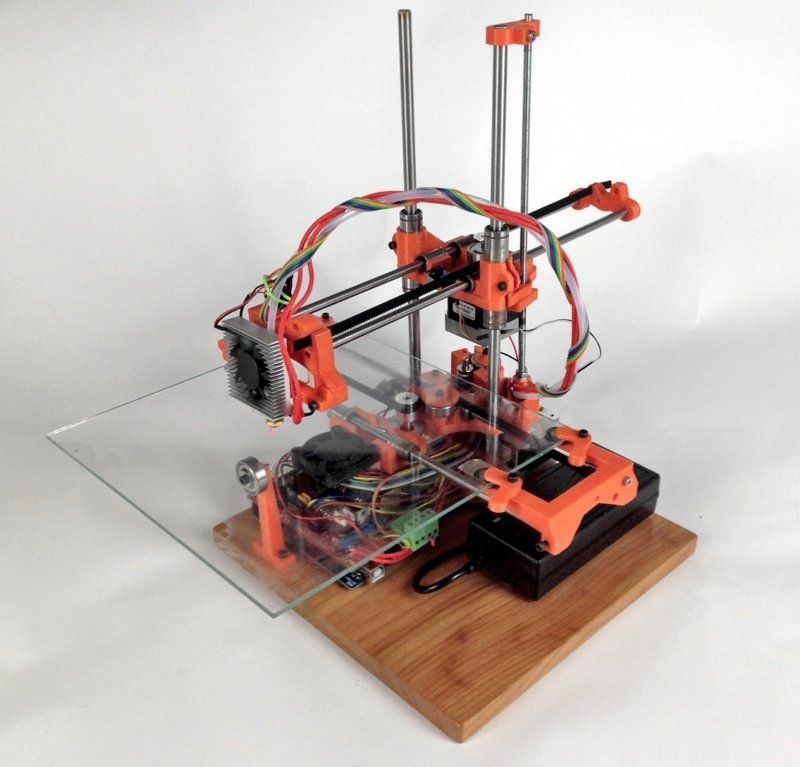 In combination with a sufficient print area (115 x 65 x 165 mm) and user-friendly software, the machine is great for hobbyists and small-scale manufacturers of highly accurate miniatures.
In combination with a sufficient print area (115 x 65 x 165 mm) and user-friendly software, the machine is great for hobbyists and small-scale manufacturers of highly accurate miniatures.
Credit: @Popkusa สอน 3D / Facebook
Pros
- wide range of resins available
- easy operation
- professional quality
- competitive price
Cons
- relatively small build chamber
- closed material system
Comparison
Let’s now compare the listed models according to the important technical parameters:
|
Phrozen Sonic XL 4K 2022 |
Flashforge Foto 13.3 |
Anycubic Photon S |
|
|
Connectivity |
USB, microSD, Ethernet, Wi-Fi |
USB, Ethernet |
USB |
|
Display |
5" color touch screen |
4. |
2.8" touch screen |
|
Light source |
ParaLED 3.0 |
UV matrix LED |
UV-LCD (405nm) |
|
Manufacturer country |
Taiwan |
China |
China |
|
Outer dimensions |
290 x 330 x 470 mm |
380 x 380 x 685 mm |
230 x 200 x 400 mm |
|
Weight |
19.5 kg |
35.5 kg |
5.9 kg |
|
Print speed |
90 mm/h |
10–30 mm/h |
20 mm/h |
|
Slicing |
Phrozen 3D |
FlashDLPrint |
Photon Workshop |
|
Build volume |
190 x 120 x 200 mm |
292 x 165 x 400 mm |
115 x 65 x 165 mm |
|
Min. |
10 microns |
25 microns |
10 microns |
|
Technology |
LCD |
LCD |
SLA |
Best filament 3D printers for miniatures
FFF/FDM printing has been available for quite a while, but in recent years it has become even more available. Due to its main advantages, such as scaling and material diversity (even inexpensive 3D printers now support a wide range of filaments), it is a perfect starting point for miniature makers.
Credit: @dicetaverngames / Instagram
With this technology, thermoplastic is heated to the melting temperature and then extruded through the nozzle. By moving the print head, the machine prints layer by layer of the given model.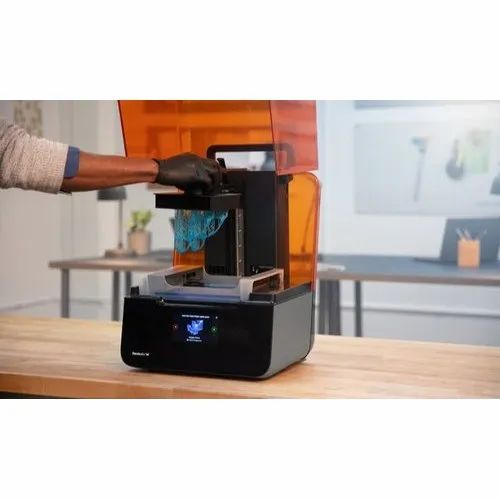
The quality of FDM prints depends on multiple factors, including the filament type, nozzle size, minimum layer height, and the user’s skills. As a rule, the quality here is not as high as with resin printing, but where FDM loses in terms of detailing, it certainly leads in size and simplicity.
QIDI Tech i-Fast 3D printer
The QIDI Tech i-Fast lives up to its name by enabling rapid and hassle-free printing of remarkably accurate models. This industrial-grade FDM 3D printer is based on the dual extrusion technology, which lets you print soluble supports and multicolor models as well as two similar objects simultaneously. The build volume depends on the print mode: it’s 330 x 250 x 320 mm for two extruders and 360 x 250 x 320 mm for one. Thanks to the enclosed all-metal construction and heated chamber, the QIDI Tech i-Fast easily handles high-temperature materials. The advanced features like a direct drive extrusion system, detachable magnetic heat bed, wear-resistant ruby nozzle, and powerful thermal insulation provide smooth printing experience and reliable output.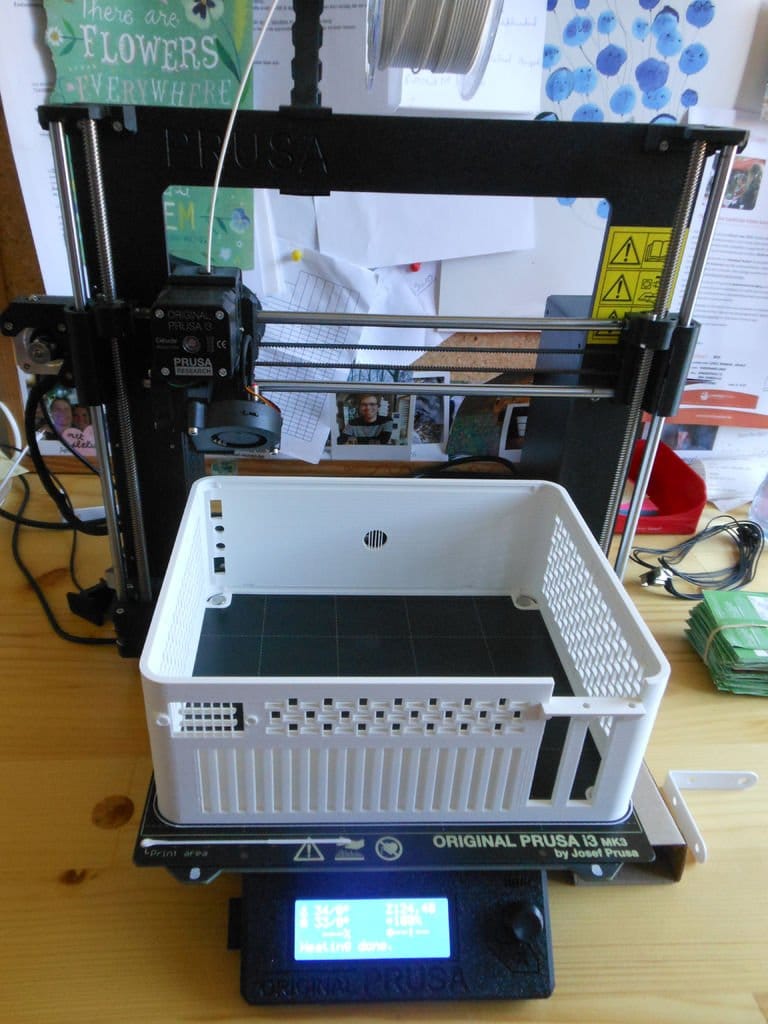
Credit: @QIDI TECH / Facebook
Pros
- high-end components
- remarkable precision (min. layer height is 50 microns)
- intuitive slicing
- wide material support
Cons
- heavy and quite big
- relatively expensive
QIDI Tech X-MAX 3D printer
For a personal 3D printer, the QIDI Tech X-MAX has quite a professional approach. This fully-enclosed device comes completely assembled and ready to work. The machine boasts two interchangeable extruders with multiple filament options: one set for high-stability PLA, ABS, TPU printing and one for high-performance PC, Nylon, and Carbon fiber. Add to that a robust structure, flexible removable print bed, silent operation, air purification, Wi-Fi connectivity, easy-to-use software, and regular upgrades — and you’ll get a reliable tool for any complex project.
Credit: @QIDI TECH / Facebook
Pros
- large build volume (300 x 250 x 300 mm)
- low noise level
- excellent print quality
- assisted bed leveling
- rich connectivity options
Cons
- no dual extrusion
- quite heavy and massive
Raise3D E2 3D printer
The Raise3D E2 is an IDEX (Independent Dual Extrusion) 3D printer capable of printing in the mirror and duplication modes.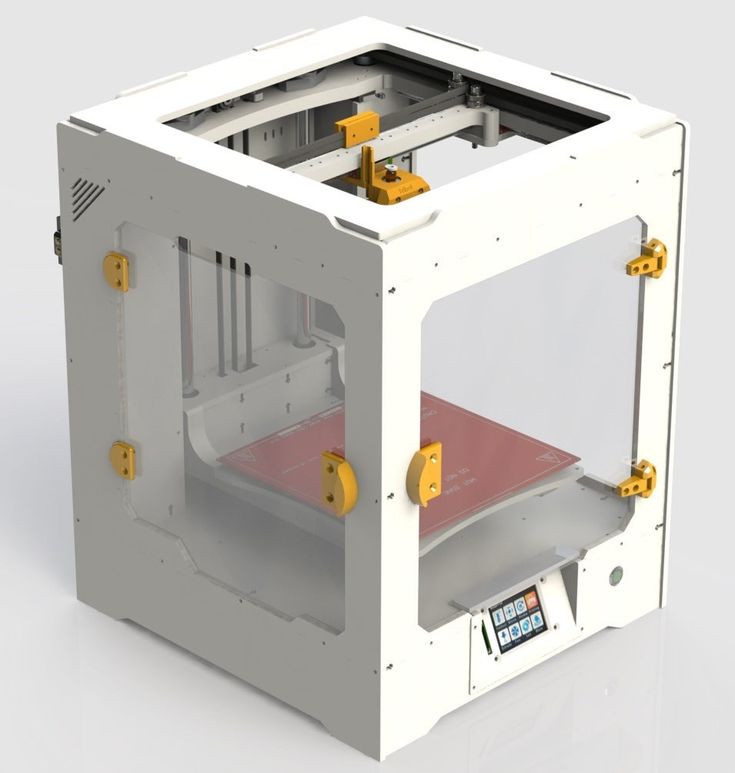 Due to a heated flexible print bed, the machine is particularly great for multi-material projects. The large build volume of 330 x 240 x 240 mm (in the single extruder mode) allows printing objects of various sizes in whole. Being the first 3D printer with a dedicated video-assisted offset calibration system, the Raise3D E2 is a high-performance, user-friendly device for time- and cost-effective production at a professional level.
Due to a heated flexible print bed, the machine is particularly great for multi-material projects. The large build volume of 330 x 240 x 240 mm (in the single extruder mode) allows printing objects of various sizes in whole. Being the first 3D printer with a dedicated video-assisted offset calibration system, the Raise3D E2 is a high-performance, user-friendly device for time- and cost-effective production at a professional level.
Credit: @robin3dverse / Instagram
Pros
- high and stable print quality
- great usability
- sturdy design
- time-saving operation
- open material system
Cons
- quite expensive
- tricky nozzle change procedure
CraftBot Flow IDEX dual extrusion 3D printer
The CraftBot Flow from CraftUnique is an IDEX 3D printer of a new generation. Its reinforced steel construction provides extreme stability and reliability of the printing process.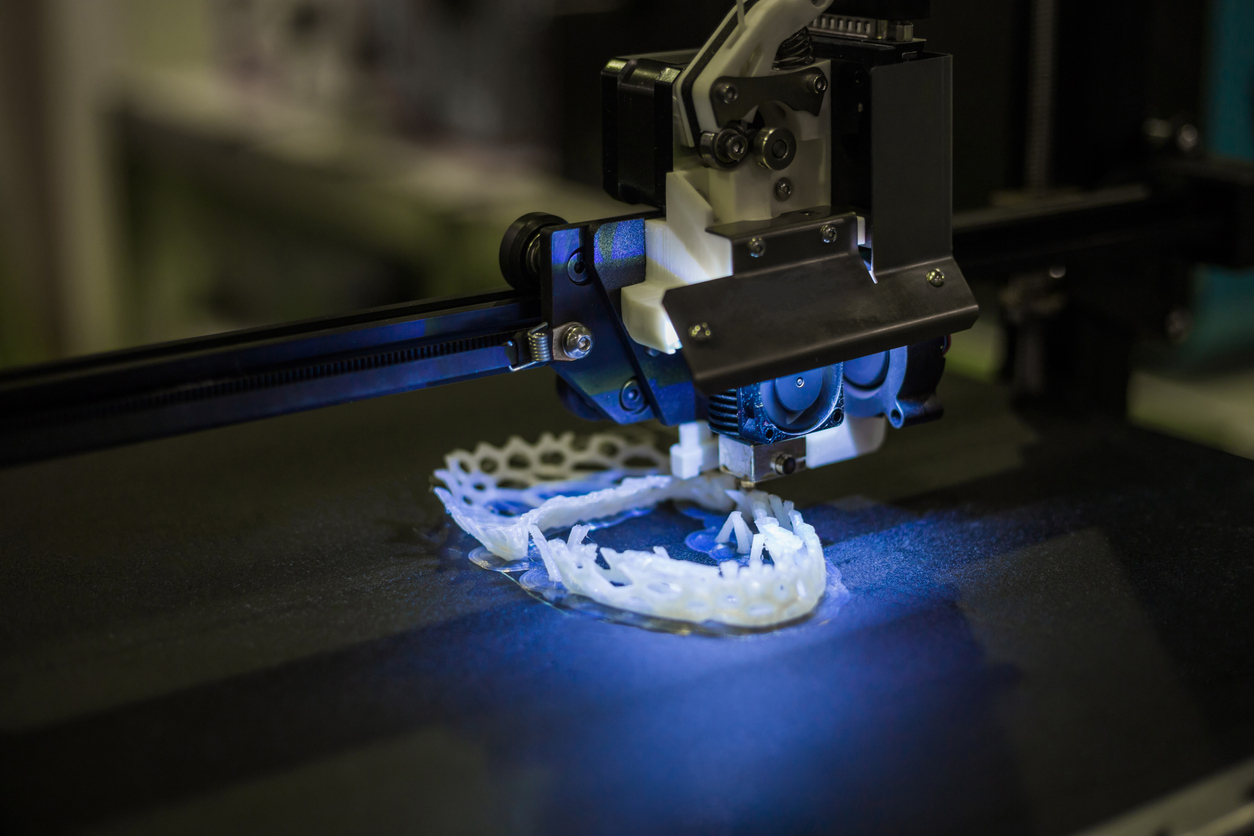 The all-metal hotends make extrusion really smooth, while a layered heated bed ensures optimum adhesion and easy print removal. Overall, the machine is quite beginner-friendly: with functions like pause and recovery throughout a session, filament runout sensor, and built-in camera as well as the function of print resuming after power outages, it is very convenient to handle regardless of the user’s experience and skills.
The all-metal hotends make extrusion really smooth, while a layered heated bed ensures optimum adhesion and easy print removal. Overall, the machine is quite beginner-friendly: with functions like pause and recovery throughout a session, filament runout sensor, and built-in camera as well as the function of print resuming after power outages, it is very convenient to handle regardless of the user’s experience and skills.
Credit: @fuse3d1 / Instagram
Pros
- large build volume (425 x 250 x 250 mm)
- sturdy steel frame
- integrated camera and LED status indicator
- semi-automatic calibration
- fast and effective slicer
Cons
- scarcely affordable
- rather massive and big
Comparison
The table below shows the major differences between the mentioned devices in terms of their technical specifications:
|
QIDI Tech i-Fast |
QIDI Tech X-MAX |
Raise3D E2 |
CraftBot Flow |
|
|
Print chamber |
Enclosed, heated (up to 60 °C) |
Enclosed |
Enclosed |
Open (upgradable) |
|
Connectivity |
USB, Wi-Fi, SD card |
USB, Wi-Fi, LAN, SD card |
Wi-Fi, LAN, USB, Live camera |
USB, Wi-Fi |
|
Display |
3. |
5" color touch screen |
7" touch screen |
5" color LCD touch screen |
|
Extruder type |
Dual |
Single |
IDEX |
IDEX |
|
Manufacturer country |
China |
China |
USA |
Hungary |
|
Max. extruder temperature |
300 °C |
300 °C |
300 °C |
300 °C |
|
Max. |
60 °C |
100 °C |
110 ºC |
110 °C |
|
Nozzle size |
0.4 mm |
0.4 mm |
0.4 mm (default), 0.2/ 0.6/ 0.8/ 1.0 mm (available) |
0.4 mm |
|
Outer dimensions |
710 x 510 x 670 mm |
737 x 660 x 610 mm |
607 x 596 x 465 mm |
635 x 450 x 540 mm |
|
Weight |
33 kg |
27.9 kg |
N/A |
35 kg |
|
Print speed |
150 mm/s |
60 mm/s |
30–150 mm/s |
200 mm/s |
|
Printable materials |
PLA, Nylon, TPU, PETG, ABS, PC, Wood, CF, and more |
ABS, PLA, TPU, Nylon, CF, PC |
PLA / ABS / HIPS / PC / TPU / TPE / NYLON / PETG / ASA / PP / PVA / Glass Fiber Infused / Carbon Fiber / Infused / Metal Fill / Wood Fill |
PLA, ABS, PET, Nylon, Carbon-fiber reinforced composites, wood, brass, and more |
|
Software |
QidiPrint, Cura, Simplify3D |
QidiPrint, Cura, Simplify3D |
ideaMaker |
CraftWare |
|
Build volume |
360 x 320 x 250 mm |
300 x 250 x 300 mm |
Single extruder: 330 x 240 x 240 mm; dual extruder: 295 x 240 x 240 mm |
425 x 250 x 250 mm |
|
Min. |
50 microns |
50 microns |
20 microns |
50 microns |
|
Technology |
FFF FDM |
FFF FDM |
FDM |
FFF FDM |
What makes a good 3D printer for miniatures
Not every machine will be great for making quality tabletop miniatures and detailed figurines, so mind that there are certain aspects defining a 3D printer as a perfect option or a no-go.
Precision and layer height: one of the natural requirements for desktop miniatures is their detail quality. To achieve this, look for a machine providing sufficient print accuracy and which is capable of delivering smooth surface finishes thanks to low layer heights.
Cooling: deformation is one of the most typical issues coming in the way of good models. Yet, it can be easily avoided with a decent cooling system. When the fan works evenly for each angle and layer of the print, you are sure to get a great result.
Print area: depends on your purpose. If you plan to mass produce miniatures in a quick and effective way, search for a corresponding build volume.
Stable construction: heavy metal frames are less susceptible to vibrations and other circumstances that might affect miniature quality.
Best practices for 3D printing miniatures
So, you’ve found a fitting 3D printer, but technical parameters alone will not do the trick. Here are some recommendations on how to fine-tune the machine to get perfect miniatures of top quality.
Credit: @caphminipainting / Instagram
Nozzle size
The printer’s precision depends directly on the size of the nozzle: the smaller it is, the more accurate models you get. Naturally, it also affects print speed, but miniatures don’t take much time all the same.
Naturally, it also affects print speed, but miniatures don’t take much time all the same.
Printing speed
It’s totally advisable to slow down your printer when dealing with miniature models: that way, they will be more precise. Try 20–30 mm/s to see major differences.
Infill percentage
This parameter essentially specifies the strength of your miniatures. In addition, it defines material costs. To save on the latter, set infill to 10%. Otherwise, try a higher option.
Retraction settings
Optimal retraction settings help to avoid oozing and filament stringing, which is a general case with some printing materials, especially PLA.
Post-processing
Though it’s not a part of the printing process, focus on the final look of your miniature: paint it, sand, or polish its surface to get a nice result.
Specs to consider for your 3D printer
With a massive amount of 3D printers available on the market, those who want to make tabletop miniatures should first look at several crucial parameters to choose a right device depending upon their preferences.
Credit: @cobramode / Instagram
Printing fidelity
The most important aspect for miniature crafting is the printer’s ability to convey all the details. It is indicated by the following factors:
Nozzle diameter: ideally, it should not exceed the standard 0.4 mm to print fine details, and 0.2 mm is even better, so search for the models with interchangeable nozzles of two or more sizes.
XY precision: it is basically determined by the quality of the bearings, belts, motors, and frame. All-metal construction in combination with reliable kinematics provides a stable base for high accuracy.
Layer thickness: as we’ve already mentioned, the lower it is, the more detail your model will get. With FDM printers, the minimum layer thickness for miniatures should be well under 100 microns.
Overall build volume
This part is very simple: with a large build chamber, you will be able to produce single massive models or a quantity of smaller miniatures.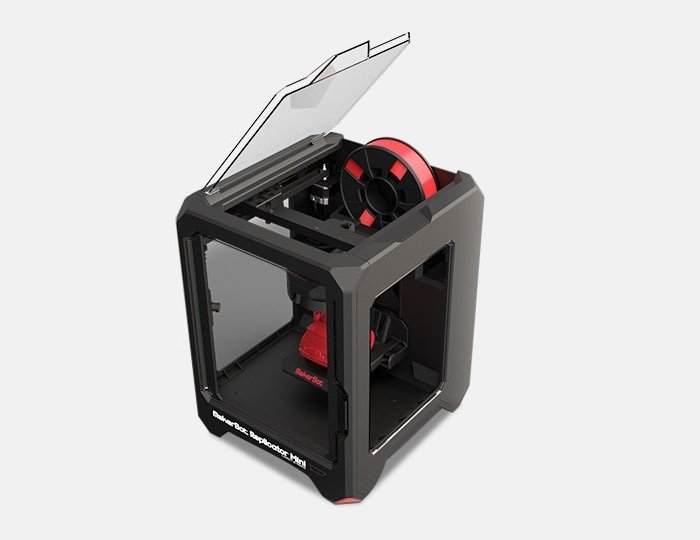 Thus, instead of 10 figurines, you can make 100 over the same time.
Thus, instead of 10 figurines, you can make 100 over the same time.
After all, 3D printing is generally quite slow, so the speed of the process can be compensated by a capacious device. Just keep in mind that a bigger build volume implies a larger weight and dimensions.
Quality of craftsmanship
When you aim for precision, the quality of the 3D printer and its components is crucial. With a subpar framework and assembly, the device will likely give you some issues during the printing process, such as clogging, vibrations, skipping, etc. Naturally, this will result in poor print quality, especially in the case with desktop miniatures.
Here, only trusted and well-known brands with a lot of feedback should be given priority. Choosing the best 3D printer for minis is a long and demanding task of acquaintance with hundreds of tests and printouts. Luckily, we’ve already complied with it for you.
Types of miniatures you can 3D print
3D printing is all about potential: with the right machine, material, and settings, you can create almost anything within the capabilities of your device and imagination.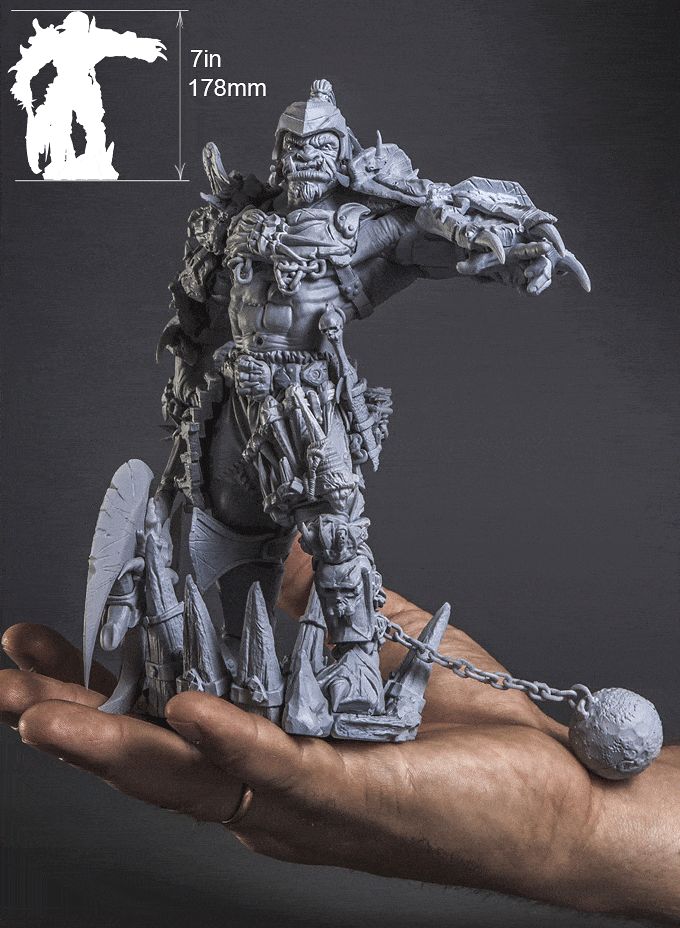
Credit: @talisman_miniatures / Instagram
Speaking of desktop miniatures, there are several categories of models you can print with some knowledge and preparation.
Can you print props and terrain?
To make your game even better, you can print not only miniatures, but also terrain and small props for greater immersion and exciting pastime. A 3D printer is a perfect tool to diversify the story by adding more content to the game.
Credit: @radium.minis / Instagram
However, what’s best for minis is not necessarily good for terrains. While the level of detail might still be important, the size will definitely be the priority for this category. Thus, you will need an FDM 3D printer with a large build chamber. Not only will it provide a sufficient volume, but also simplify the printing process.
However, the size of the chamber is not the limit: you can always split a model into several parts, effectively arrange and bond them afterwards to get a highly detailed yet big enough terrain, building, prop, etc.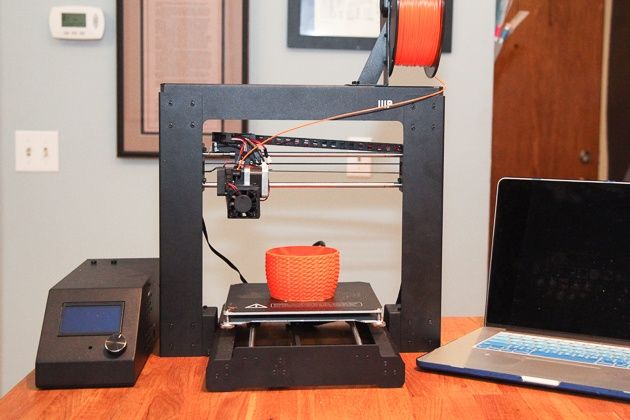
3D printing miniature models 54 mm and larger
Credit: @blackforge_games / Instagram
For the majority of 3D printers, a 54 mm figurine is not a challenge. The size of a miniature is directly proportional to the number of details that can be added to make it more interesting and recognizable to players. Plus, turn to some post-processing to make your minis truly gorgeous. Some small features added by paint or sculpting might be a real highlight of your creation.
Investing in a resin 3D printer is also an option, since they boast higher precision and smooth surface finish. Nevertheless, larger models will require a lot of resin, which is more expensive compared to filament.
3D printing small detailed models
Credit: polygon.com
Making smaller miniatures between 28 and 54 mm is the hardest task for a 3D printer. First, make sure you have a machine with suitable capabilities stated above. If you don’t, small features will be all meld together in something indiscernible.
Small models won’t be a problem for a regular SLA printer with appropriate layer height and nozzle parameters. Although, it will take some patience and practice to achieve the best possible quality. The professional-grade FFF devices are also fit for such projects, but they come at a price and need additional treatment to clear some print lines for better appearance.
Where to download miniatures to 3D print?
3D printers use model files of various formats that come from CAD software. With some skills in 3D modeling, you will be able to print your own designs through the export feature. It is also possible to scan a desired model with a 3D scanner and make a corresponding mesh for further printing. But what if you don’t have 3D CAD experience and additional devices or physical models at your disposal?
Fortunately, there are numerous online sources to get all types of files you might need to make minis with any convenient slicer at hand, from original editable CAD files to printable ones.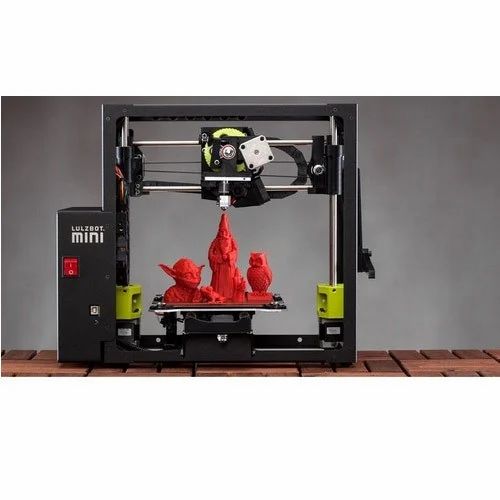 Now, let’s see what the best of them are.
Now, let’s see what the best of them are.
Credit: @dutchmogul / Thingiverse
Thingiverse — a community-fueled repository of 3D printable files, including optimized ones. There are plenty of D&D minis and a number of thematic fantasy sets.
MyMiniFactory — generally similar to the previous website with a free and premium versions. Moreover, it has a dedicated tabletop gaming section with a fine selection of figurines.
Cults3D — a great source of fantasy and anime designs. However, most files here are not free.
Pinshape — a free/premium source with a vast selection of minis related to popular franchises.
Youmagine — mostly similar to the sites described above.
Kickstarter — a crowdfunding platform, where you can support designers and get new models and whole sets instantly or after a while. Still, note that most of them are enthusiasts.
Patreon — a subscription-based source that mostly offers a welcome and monthly packs of models from the creators you decide to support.
You can also check out some popular tabletop mini designers to see what they have to offer. We recommend the following profiles:
- Dutchmogul
- Duncan Shadow
- The Makers Cult
- Ill Gotten Games
- Valandar
- mz4250
- Terrain4Print
How much does it cost to 3D print a miniature?
Credit: @3dprintingminis / Instagram
Apart from the initial cost of purchasing a 3D printer, it is only necessary to pay for electricity and printable materials to keep making miniatures, props, and terrains to your heart’s content. Since the majority of modern devices are low-energy, all expenses are basically reduced to filament or resin price. Essentially, it comes to the volume of material used, and miniatures clearly are too small to take much. But let’s look at the numbers.
With an FDM 3D printer, it takes just a few grams of filament to print a single mini at a height of around 1 inch.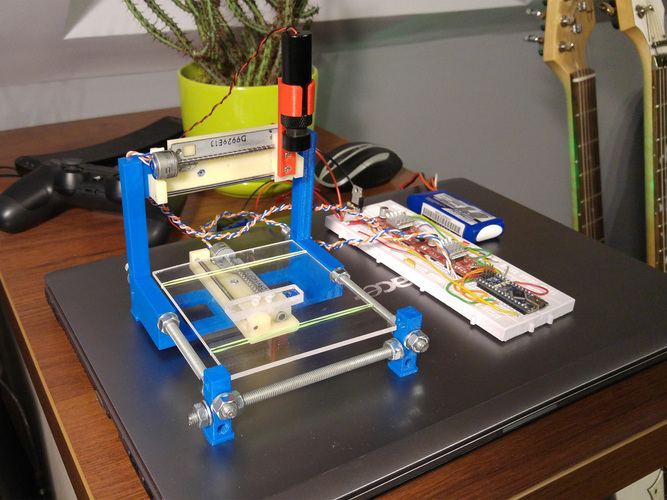 A standard price for 1 kg of PLA or ABS is approximately $20, which amounts to 2.5 cents per gram or 20 cents per figurine.
A standard price for 1 kg of PLA or ABS is approximately $20, which amounts to 2.5 cents per gram or 20 cents per figurine.
Speaking of a regular SLA printer, a 1L bottle of resin is enough for at least a hundred of minis. On average, it costs around $50 per liter. If larger models might take 100+ ml of resin, smaller ones are far less expensive. Each miniature will cost you +-60 cents in most cases.
Best filament for miniatures and terrain
Credit: @gsun3d_official / Instagram
Since resins do not fall within the category, the best material for tabletop miniatures, props, and terrain is definitely PLA. Due to its lightness, low strength, versatile and common nature, this material is by far the most universal option both for beginners and professionals. Among other features, it is very easy to print with and supported by all ordinary FDM 3D printers.
Conclusion
Credit: @cyberforgeminiatures / Instagram
Regardless of one’s experience, everyone is sure to find an ideal 3D printer for making desktop miniatures according to their goals. The current market has plenty of options for users of all levels, while online sources are there to lend a hand in terms of ready-to-print models and valuable tips on technical matters.
The current market has plenty of options for users of all levels, while online sources are there to lend a hand in terms of ready-to-print models and valuable tips on technical matters.
After all, printing custom miniatures for D&D, Warhammer 40000, and other popular franchises is more economical than buying them. And of course, it is an incredible experience, which might become a good or even profitable hobby, not to mention more vivid impressions from your favorite board games.
90,000 manufacturing miniatures 28mm, dioram, game locations using 3D printer09.03.2022
Content
- How to choose a 3D printer for miniatures
- Advantage of 3D printing for miniatures 9000 9000 FDM 9000 LCD/ DLP
- FDM
- LCD

Miniature figurines with amazing detail attract the eye. A little grotesqueness and slightly wrong proportions (otherwise it would be inconvenient to play or transport such a “little one”) are more than compensated by detailed elaboration and an abundance of small, at first glance, insignificant details. These are no longer just small table soldiers, but heroes with their own unique history.
Warhammer 40k 9 miniature soldier0044
Miniatures come in different sizes: from 6mm and more. The most popular today is the 28mm format. The creation of such figurines is really almost jewelry work.
A 3D printer will help not only in the production of miniatures, but also in related areas, such as the creation of figurines, details of game locations, or, for example, elements of dioramas. To understand the advantages of 3D printing over classical manufacturing methods, it is worth remembering how such models are usually made at home.
Advantage of 3D printing for miniatures
Not everyone was ready to shell out a substantial amount for the purchase of a set of table soldiers, and sometimes the necessary heroes simply were not on sale. Then baked and self-hardening plastics for modeling were used.
Then baked and self-hardening plastics for modeling were used.
First you need to make a wire frame, so the finished figure will turn out to be more durable, and it will be much easier to keep all the proportions. The wire frame can be attached to the stand, which will make the miniature statue more stable, and it can be easily fixed in any position without fear of smearing small parts with your fingers.
Wire frame for miniature
Gradually, layer by layer, the volume of plastic increases on the frame. Each layer must be baked or dried well, depending on which plastic is used - self-hardening or baked.
Gradually, we begin to add small details and work out the details. In fact, this is a very painstaking process that requires perseverance and some sculpting abilities. For a convenient study of small details, you may need special stacks for modeling, but they can be successfully replaced with improvised tools.
Sculpting tool kit
The result is such a miniature statue.
Miniature 28mm baked plastic
By the same principle, large table figures, or some elements of dioramas, can be made.
Sometimes a sculptor is more accustomed to working with plasticine. Then, after sculpting, the stage of preparation and casting of the figurine into a silicone mold is added. This method is suitable for small-scale production of a small desktop army.
But it is necessary to properly prepare the figurine for casting. The finished "warrior", most likely, will have to be divided into several parts, so that it would be more convenient for the caster to remove the molds and make castings. During the cutting process, it is worth adding a few locks so that the finished castings can be easily assembled, like pieces of a puzzle.
Molded figurine against silicone mold
Some craftsmen have learned to cast metal copies.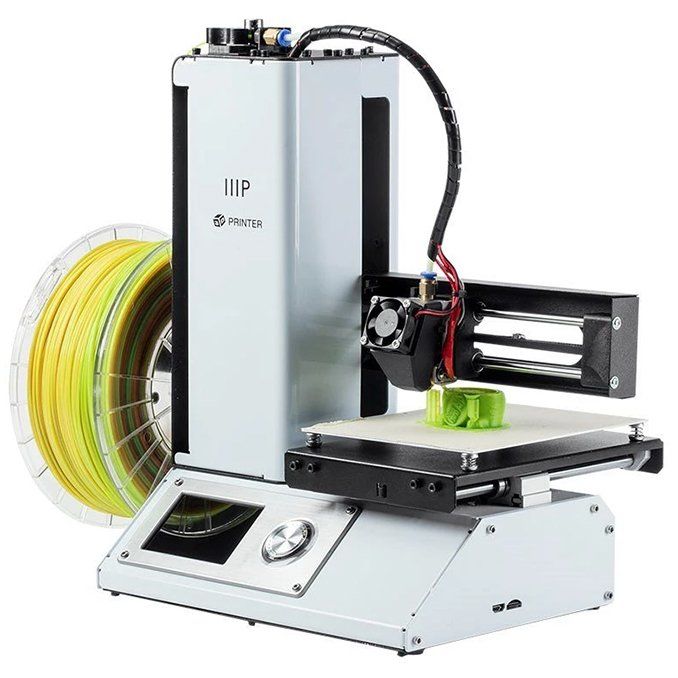 Such soldiers are usually made of low-melting metals (for example, lead) and cast in plaster molds. Sometimes a special silicone is used, but it is a little more difficult to achieve good shedding of a small product in a silicone mold.
Such soldiers are usually made of low-melting metals (for example, lead) and cast in plaster molds. Sometimes a special silicone is used, but it is a little more difficult to achieve good shedding of a small product in a silicone mold.
Cast metal soldier
In addition to making figurines from scratch, some craftsmen remake ready-made miniatures. This is called conversion.
Conversion in miniatures is a refinement, stylization or alteration of a finished figure. Unfortunately, not every hobbyist has good sculpting skills, and this alteration helps to achieve good results regardless of artistic skills. The main thing is to act very carefully.
Conversion helps enthusiasts achieve amazing figurine detail, add some detail, change the pose, or create a new character that is not yet on sale.
Lord of the Astral Claws turned to Chaos
In addition to making the figures themselves, modelers create colorful locations to immerse themselves in the world of their favorite game. This is true not only for 28mm miniatures, but for example for DND games. Such voluminous locations allow you to immerse yourself in the world of your favorite game much better and make the game more exciting.
This is true not only for 28mm miniatures, but for example for DND games. Such voluminous locations allow you to immerse yourself in the world of your favorite game much better and make the game more exciting.
Game location for board game Warhammer40k
The creation of such locations is painstaking work, and both improvised and special equipment are used as material.
Role play location
A 3D printer allows you to produce miniature figures and game locations much faster. On the Internet you can find many paid and free models of 28mm figures from different universes or various elements of locations - houses, fences, mechanisms, etc. Adapting or slightly changing the finished 3D model for yourself is much easier than cutting and gluing a finished figure. And creative people with modeling skills are unlikely to have difficulties with the transition to “digital clay”.
Warhammer40k universe 3D miniature model
And of course, dioramas are worth noting.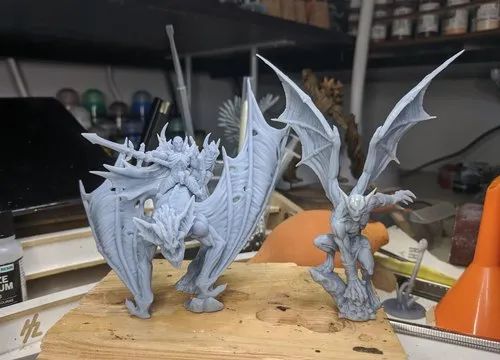 This is a separate art form with a scene or location frozen in time. Dioramas come in different sizes, but each of them impresses with its detail and careful study.
This is a separate art form with a scene or location frozen in time. Dioramas come in different sizes, but each of them impresses with its detail and careful study.
Diorama based on the game STALKER
Each diorama is unique, so the craftsmen use improvised materials to make it. Everything is limited only by the imagination and ingenuity of the artist.
Diorama “Desert Hero”
The main advantage of 3D printing is high detail and repeatability. If you need to make a small batch of miniatures, it will be much easier to print them than to cast, for example. Casting small items is a painstaking process that requires some skill and equipment. It is very difficult to achieve good pourability of small products the first time.
From model to finished figure
And for the manufacture of piece products, such as a diorama element, a 3D printer can replace many materials and tools for modeling.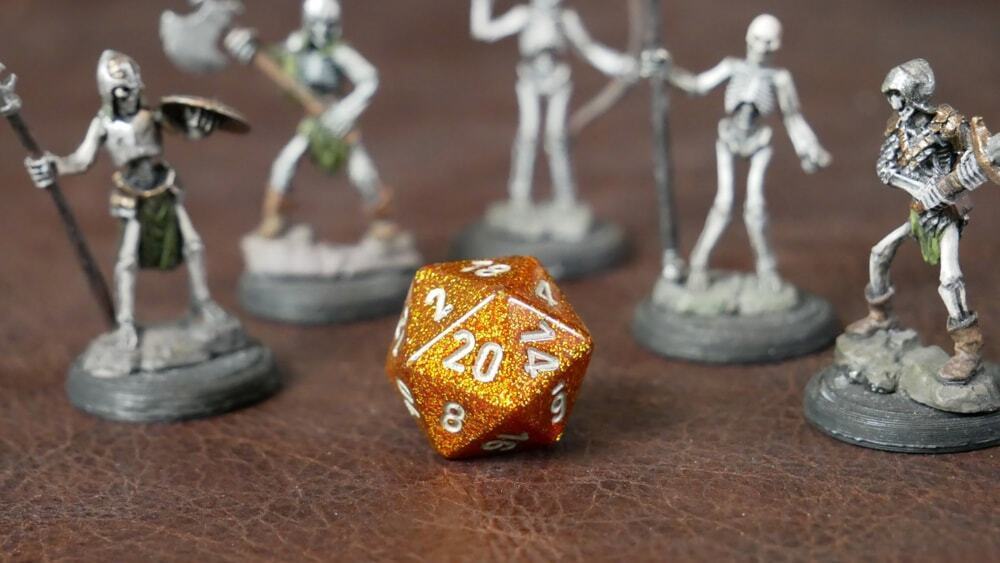 In addition, by using and combining different materials, it is possible to create models that are difficult or almost impossible to create manually. For example, using a special polymer, you can print optically transparent products that can imitate glass.
In addition, by using and combining different materials, it is possible to create models that are difficult or almost impossible to create manually. For example, using a special polymer, you can print optically transparent products that can imitate glass.
Which technology to choose
To begin with, it is important to determine the requirements for the printer - will it be used only for the manufacture of 28mm personal army or should it be a universal printing machine? It is important to understand what size the finished model will be, how detailed it should be, and how much time can be spent on post-processing.
Depending on this, it is worth deciding on the technology by which the 3D printer will work. You can choose one of two technologies - FDM or photopolymer printing (there are several technologies, but DLP and LCD printers are currently popular).
FDM
FDM 3D printers use a plastic filament as a material. In a heated extruder, the filament is melted and extruded through a thin nozzle, so layer by layer, a three-dimensional model is grown.
Working principle of FDM 3D printer
Layer thickness and nozzle diameter can be changed in some printer models. The minimum layer is usually 0.1 mm. In some models of 3D printers, a layer of 0.05 is available, but for printing with such a layer, it is important to choose the right many settings and the print speed will be quite slow.
Pros:
-
Large print area
-
Many different materials are available for every “taste and budget”
-
Inexpensive Consumables
Cons:
Of course, FDM printers are hardly suitable for making miniature figures, but they can be successfully used to print large souvenir figures, create game locations and some parts of dioramas.
LCD/DLP
The principles of operation of LCD and DLP printers are very similar.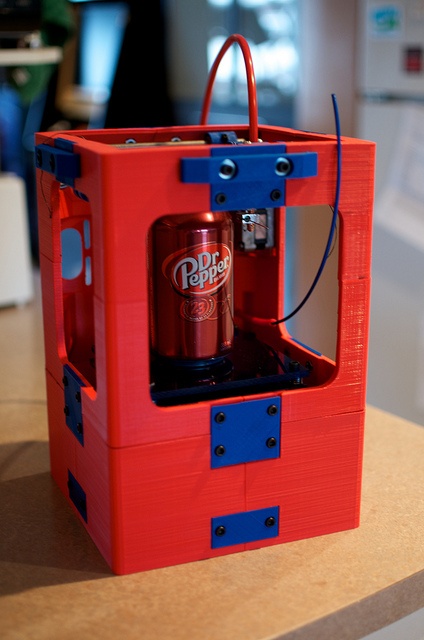 The material used is polymers that harden under the action of UV light. The only difference is that an LCD printer uses an LED matrix in conjunction with an LCD screen as a source of UV radiation, while a DLP uses a projector.
The material used is polymers that harden under the action of UV light. The only difference is that an LCD printer uses an LED matrix in conjunction with an LCD screen as a source of UV radiation, while a DLP uses a projector.
Working principle of photopolymer 3D printer
Pros:
-
The ideal surface of the finished figure
-
Many different materials available
-
High print accuracy even for the smallest items
Cons:
Photopolymer 3D printers are able to create miniature products that cannot be made using FDM technology. This technology will be an ideal choice for creating miniatures, small poster models, etc.
Print examples
Robot printed on Asiga Pro 4k
Figurine made with Phrozen Sonic Mini 4k
28mm 3D printed miniatures
3D Printed Halloween Miniature
3D printed play models
FDM Cube Thrower
Figure making process from 3D model to painting
Best Printer Ranking
FDM
Creality3D Ender 3 (Build Kit)
Features:
Print technology: FDM/FFF
Working area size: 220x220x250 mm
Number of extruders: 1
Max.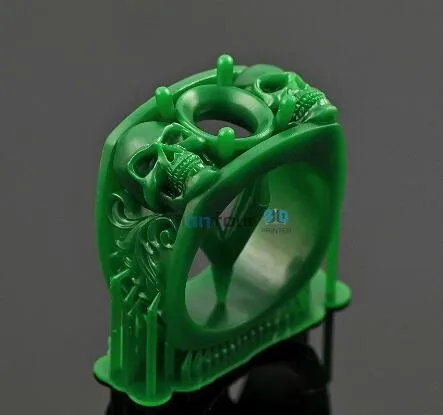 extruder temperature: max. 255℃
extruder temperature: max. 255℃
Closed Camera: No
Heated table: Yes
Plastic type: ABS, PLA, PETG, Flex, Decorative plastics, others
A popular and unpretentious 3D printer that many makers liked. Creality3D Ender 3 is sold as a kit (assembly kit), but thanks to the detailed instructions, there should be no problems with assembly.
Wanhao Duplicator 6 Plus
Features:
Print technology: FDM/FFF
Working area size: 200*200*180mm
Number of extruders: 1
Max. extruder temperature: max. 260°C
Closed Camera: Optional
Heated table: Yes
Plastic type: ABS, PLA, PETG, Flex, Decorative plastics, others
Wanhao Duplicator 6 Plus is an updated version of the Duplicator 6. The new modification adds automatic calibration, printing resume after a power outage, and others. You can immediately purchase a printer with a closed case, this will allow you to easily print with composites. Wanhao Duplicator 6 Plus will become a trouble-free workhorse, and thanks to the “omnivorous” extruder, even a beginner will be able to print exotic materials without any problems, such as soft flexes or rubbers.
Wanhao Duplicator 6 Plus will become a trouble-free workhorse, and thanks to the “omnivorous” extruder, even a beginner will be able to print exotic materials without any problems, such as soft flexes or rubbers.
FlashForge Creator Pro 2
Features:
Print technology: FDM/FFF
Working area size: 200x148x150 mm
Number of extruders: 2
Max. extruder temperature: max. 240°C
Closed Camera: Yes
Heated table: Yes
Plastic type: ABS, PLA, PETG, Flex, Decorative plastics, others
FlashForge Creator Pro 2 is an almost professional dual extruder 3D printer. Thanks to the closed body, Creator Pro 2 has no problem even with composite materials, and two extruders allow the use of soluble support for complex models. Moreover, FlashForge extruders are independent, this allows you to print 2 mirror or identical models at the same time. This allows you to speed up the production of the same type of models.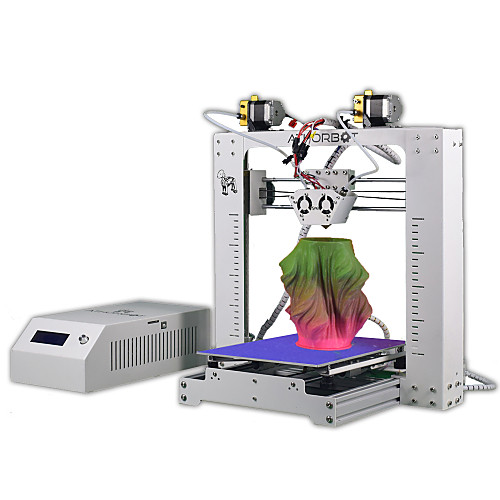 FlashForge Creator Pro 2 will not only be a good home printer, but also a great helper for a workshop or small production.
FlashForge Creator Pro 2 will not only be a good home printer, but also a great helper for a workshop or small production.
LCD
Anycubic Photon Mono 4K
Features:
LCD display resolution: 3840x2400 (4K)
UV wavelength: 405 nm
Working area size: 132x80x165 mm
Layer thickness: 0.01-0.15mm
Inexpensive, but fairly modern 3D printer with a 4K monochrome display. Anycubic Photon Mono 4K will be a good tool for printing miniature models.
Phrozen Sonic Mini 4K
Features:
LCD resolution: 6.1" 4K Mono LCD
XY positioning accuracy: 35 microns
UV wavelength: 405 nm
Working area size: 134x75x130 mm
Layer thickness: 0.01-0.30mm
The Phrozen Sonic Mini 4K is a compact high resolution 3D printer. It allows you to get accurate models even with an abundance of small details. Sonic Mini 4K is a good choice for those who need to print quickly and accurately.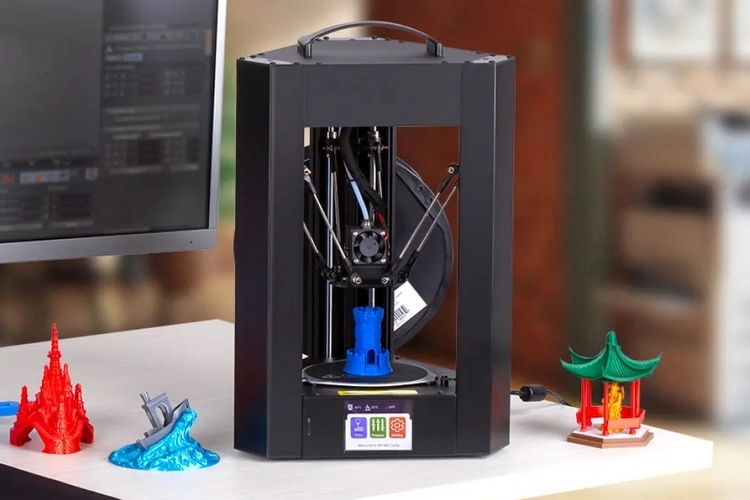
Phrozen Sonic Mighty 4K
Features:
LCD resolution: 9.3" 4K Mono LCD
XY positioning accuracy: 52 microns
UV wavelength: 405 nm
Working area size: 200x125x220 mm
Layer thickness: 0.01-0.3mm
With a larger work area, the Phrozen Sonic Mighty 4K allows you to quickly produce large models or small batches of small items. Such a 3D printer will be a good help for a small workshop or a hobby circle.
Phrozen Sonic Mini 8K
Features:
LCD resolution: 7.1" 8K Mono LCD
XY Positioning Accuracy: 22 µm
UV wavelength: 405 nm
Working area size: 165x72x180 mm
Layer thickness: 0.01-0.3mm
Phrozen Sonic Mini 8K is one of the representatives of 8K photopolymer printers, which can still be counted on the fingers of one hand. The high resolution LCD-matrix allows you to print figures with amazing surface quality and amazing detail.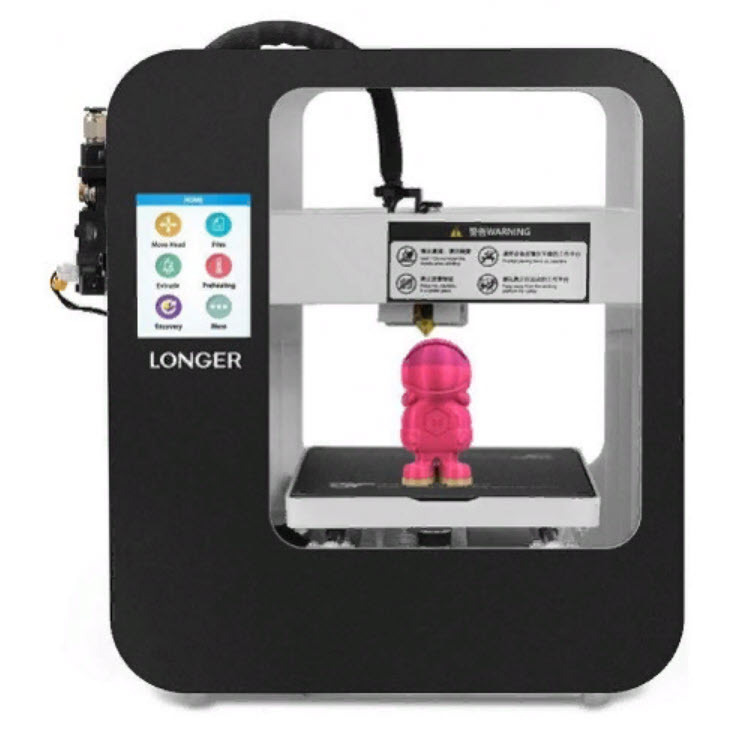 Such a printer is suitable for demanding printers who care about accuracy and the perfect surface of the finished model.
Such a printer is suitable for demanding printers who care about accuracy and the perfect surface of the finished model.
Totals
3D printers are gradually showing themselves to be great helpers in many areas, not only in medicine and industry, but also in home hobbies. Thanks to 3D printing, it is possible to produce small figurines or elements of dioramas much faster, paying more attention to the elaboration of details, rather than painstaking modeling or the search for exotic materials.
And digitalization makes it much easier to share your work and finished models in the community or adjust them to your needs, for example, change the scale or adjust the pose.
Free Shipping
Add to compare
Item added to compare Go
| Manufacturer | Phrozen
Free Shipping
Add to compare
Product added to compare Go
| Manufacturer | Anycubic |
Free Shipping
Add to compare
Product added to compare Go
| Manufacturer | Phrozen
Free Shipping
Add to compare
Product added to compare Go
| Manufacturer | Phrozen
Free Shipping
Add to compare
Product added to compare Go
| Manufacturer | FlashForge |
Add to compare
Product added to compare Go
| Manufacturer | Creality |
Free Shipping
Add to compare
Product added to compare Go
| Manufacturer | Wanhao |
#Application
Share
all materials
Choosing the best 3D printer for printing miniatures
3DPrintStory Reviews Choosing the best 3D printer for printing miniatures
The use of 3D printers for printing game miniatures is gaining more and more popularity today. As the price of 3D printers continues to fall, it is likely that the demand for 3D printed game miniatures will only continue to rise.
As the price of 3D printers continues to fall, it is likely that the demand for 3D printed game miniatures will only continue to rise.
If you pick the right 3D printer, you can get amazing 3D models for your board games or to put an inspirational figurine from your favorite game on your desktop.
Today's desktop 3D printers have become reliable, easy to use and deliver decent quality finished products.
How to choose a 3D miniature printer?
There is a wide range of desktop 3D printers that can be used to print miniatures in 3D at home. And if you study the market a bit, or at least the options below, you can get great detailed 3D models.
With the right 3D printer, you can print your own figurines and even create your own board games.
If you don't want to design 3D models of figurines from scratch (and this will really require some skills and time from you), then you can find interesting 3D models on sites with free 3D printable models. After downloading the model, you can immediately print it or edit it before 3D printing for your own needs. We also recommend that you familiarize yourself with interesting 3D models from Dutchmogul. Perhaps in his wonderful collection you will find something interesting for yourself.
After downloading the model, you can immediately print it or edit it before 3D printing for your own needs. We also recommend that you familiarize yourself with interesting 3D models from Dutchmogul. Perhaps in his wonderful collection you will find something interesting for yourself.
To get the same level of detail as the thumbnails above, your 3D printer must meet certain criteria. The most important feature of a 3D printer to consider is the level of detail it can reproduce. This criterion is formed based on the following parameters:
Nozzle diameter
To create a 3D miniature, heated plastic is extruded through a hole. Orifice is the diameter of the nozzle. Make sure the 3D printer nozzle size is less than 0.4mm.
XY Movement Accuracy
The X and Y axis movement accuracy of the 3D printer head should be taken into account. To get a more detailed model, you need to reduce the layer thickness. However, the low thickness means that 3D printing will take longer. In order to print a detailed miniature, you will most likely need a 3D printer that can print with layer thicknesses of 100 microns (0.1 mm) or less.
In order to print a detailed miniature, you will most likely need a 3D printer that can print with layer thicknesses of 100 microns (0.1 mm) or less.
Material type
The most common materials used in 3D printers are ABS or PLA. To get a good surface, after 3D printing, it should be post-processed. If you are using ABS plastic, you can sand the miniature and steam it in acetone to get a smooth surface. It is also worth paying attention to PETG plastics, which are gaining more and more attention and positive user reviews.
Thumbnail size (scale)
If you want to start 3D printing game miniatures, think about the size you would like to get.
A 28mm (~1:58 scale) or 54mm (~1:32 scale) miniature can be made with a standard desktop 3D printer that melts plastic filament. To make a smaller miniature, you will need an SLA Resin printer, which uses liquid resin and strengthens it.
In addition to the figurine, you can also print larger models. 3D printing large models such as houses, huts, castles, trees, and tanks will require more expensive 3D printers that provide faster speeds with good 3D print quality. But there is an important point in the choice. It is better to choose high-quality 3D printing than a large one. You can always separate larger models for printing and then join them together using the same adhesive. The result will be much better than lower quality 3D printing on a 3D printer with a large workspace.
3D printing large models such as houses, huts, castles, trees, and tanks will require more expensive 3D printers that provide faster speeds with good 3D print quality. But there is an important point in the choice. It is better to choose high-quality 3D printing than a large one. You can always separate larger models for printing and then join them together using the same adhesive. The result will be much better than lower quality 3D printing on a 3D printer with a large workspace.
HICTOP CR-10S 3D printer
Value for money, the Hictop CR-10S is one of the best and most affordable budget 3D printers on the market. The Prusa i3 3D printer was taken as the basis for the design.
The Hictop printer uses quality materials for the power supply, motherboard and motion control systems. The metal framework is a rigid and strong design.
The Hictop printer will arrive unassembled, but assembly is easy. You will have to essentially screw in four bolts and connect the necessary wires. That is, you can proceed directly to 3D printing almost immediately after purchase.
That is, you can proceed directly to 3D printing almost immediately after purchase.
The "S" at the end of the CR-10S stands for two Z-axis lead screws and stepper motors.
Dual axis system improves extruder movement accuracy. As a result, you naturally get more accurate 3D printing overall. This is an excellent inexpensive 3D printer that is suitable for 3D printing miniatures and figurines for board games.
The Hictop 3D printer has a mechanism to control the remaining amount of plastic. If the plastic runs out, the printer will go into pause mode and after feeding new material, you can continue printing from the area where you left off. This is a particularly relevant feature for printing large-scale 3D models.
These 3D printers are quite popular, so you will find a lot of information and tips on how to use them online. In addition, thanks to an active community, the Hictop CR-10S has a large number of modifications and upgrades that you can implement yourself and improve its already decent 3D printing quality.
Hictop CR-10S is a quality and affordable 3D printer, which is definitely suitable for 3D printing miniatures and figures of characters from your favorite games or movies.
FLASHFORGE CREATOR PRO 3D printer
FlashForge 3D Printer Creator Pro took inspiration from Makerbot Replica.
A nice feature of the FlashForge 3D printer is that it includes all custom enhancements from Makerbot. These upgrades include:
- Metal worktable supports. Thus, the working table became more stable during heating and assembling.
- Plastic-coated knobs for easy workbench calibration.
- The Central Processing Unit (CPU) supports Sailfish firmware which allows automatic calibration. In addition, the CPU helps regulate heat and delivers higher quality 3D prints.
The above features make the Creator Pro an excellent miniature 3D printer.
In addition, this 3D printer is made in a closed case, which allows you to print ABS plastic with much less difficulty.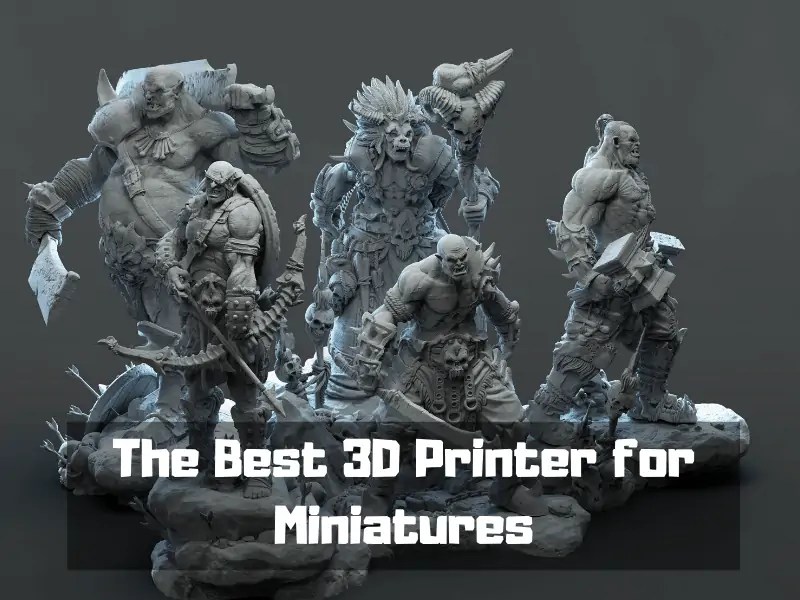
Creator Pro allows you to print two colors at the same time. If you plan to paint the finished model in the future, then you don’t really need this feature, but in general it gives you much more options than the standard analogues with one extruder.
Since the Creator Pro is based on the Makerbot Replica, there is a lot of information available on the internet about this 3D printer.
3D printer SINDOH DP200 3DWOX
If you are looking for a reliable 3D printer for printing miniatures, then you should pay attention to Sindoh DP200 3DWOX. This is the best choice if you want to make 3D mini figures.
This 3D printer is easy to use, suitable even for beginners in the world of 3D printing. Below are some of its features:
- 3D printing table covered with aluminum PTFE.
- 3D printing resolution is 50 microns (0.05 mm).
- Equipped with a high efficiency particulate air filter and a closed chamber for 3D printing, which is especially good when using ABS plastics.

- Easy to use material cartridge chamber.
- Sindoh does an excellent job of printing minifigures in high detail.
One of the disadvantages of the Sindoh DP200 printer is that it can only use manufacturer's filament. Consequently, you will pay more money for cartridges because you will not be able to use materials from other manufacturers. The price of these cartridges, of course, is higher than analogues.
Otherwise, the Sindoh DP200 3DWOX 3D printer is a great option for high quality 3D printing of detailed models.
DREMEL DIGILAB 3D Printer
The use of SLA technology for 3D printing helps to obtain miniature products of very high quality. SLA also helps print miniature parts as small as 28mm. The price of this wonderful 3D printer is comparable to the cost of a laptop.
SLA printing differs from FFF printing in the very essence of the processes. During SLA 3D printing, liquid resin is baked using a UV laser. The formation of the part looks like a gradual lifting of the finished model and a bath with liquid material.
Industry-intensive stereolithographic 3D printers are now available at home! The Dremel Digilab 3D printer has proven itself as a hobby printer, which differs from expensive industrial analogues in its exceptionally smaller workspace.
Key Features of the Dremel Digilab 3D Printer:
- The minimum wall thickness of the 3D model is 25 microns (0.025mm).
- Faster 3D printing compared to FFF 3D printers.
- Excellent surface quality of the finished 3D model.
Digilab is an excellent SLA 3D printer. It is easy to use and, according to user reviews, reliable.
With this 3D printer, you can use resins to make investment casting molds. It can also be used to make jewelry by casting metals.
Some disadvantages of using SLA for 3D printing:
- It's expensive. The resin needs to be updated, as over time it ages and loses the necessary properties.
- Resins require maintenance. Make sure you start 3D printing only after the balloons created by adding resin to the tank are gone.

Learn more


 5" color touchscreen
5" color touchscreen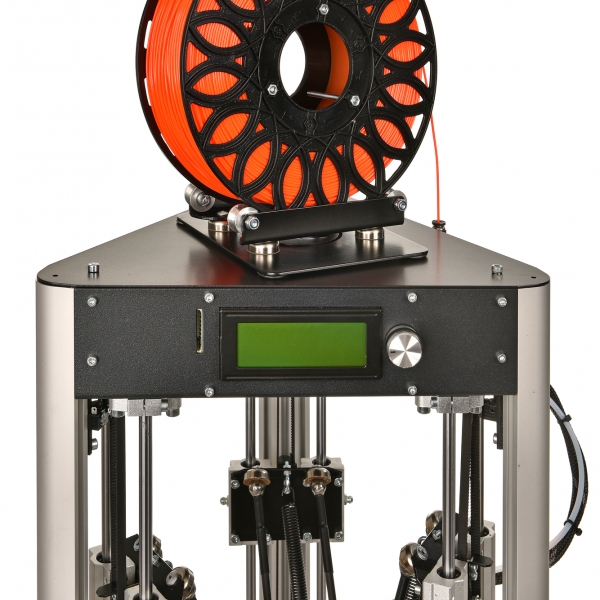 layer height
layer height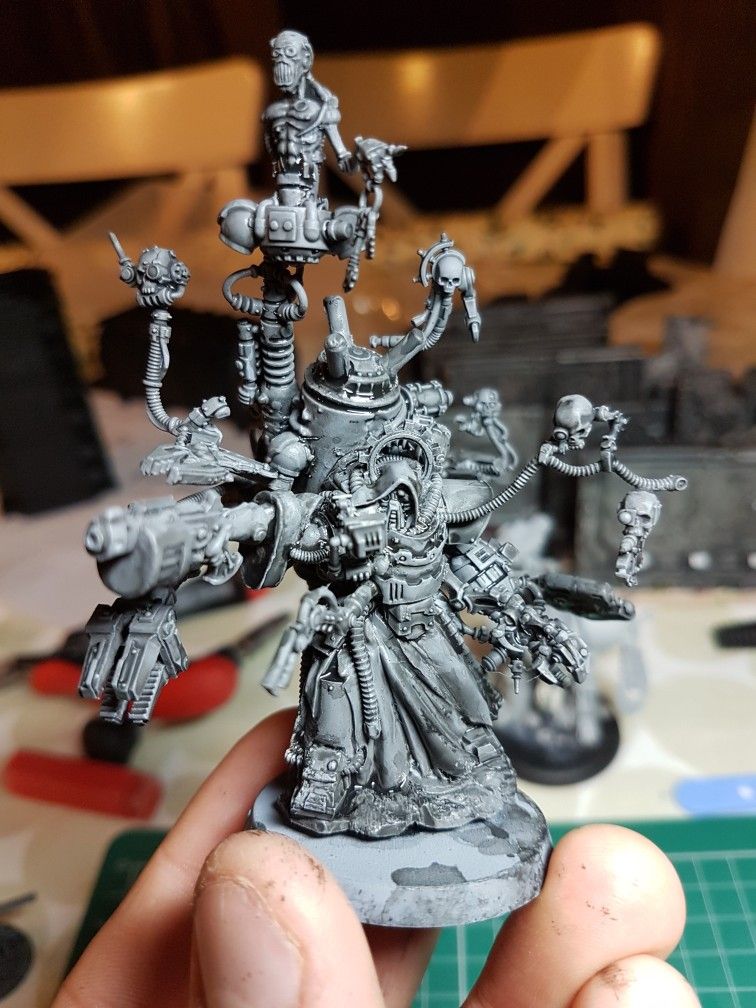 5" touch screen
5" touch screen heated bed temperature
heated bed temperature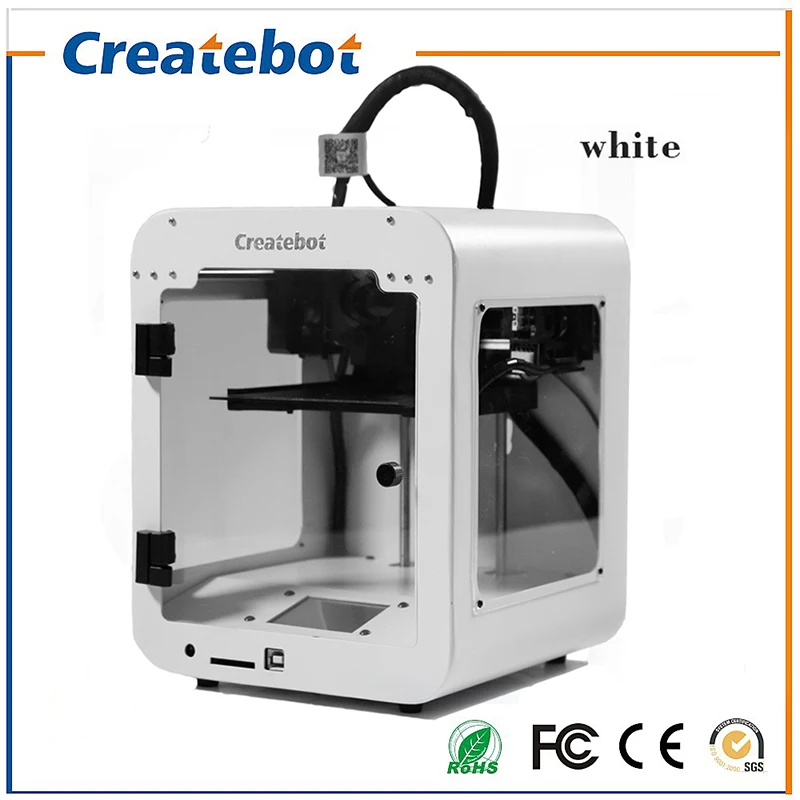 layer height
layer height